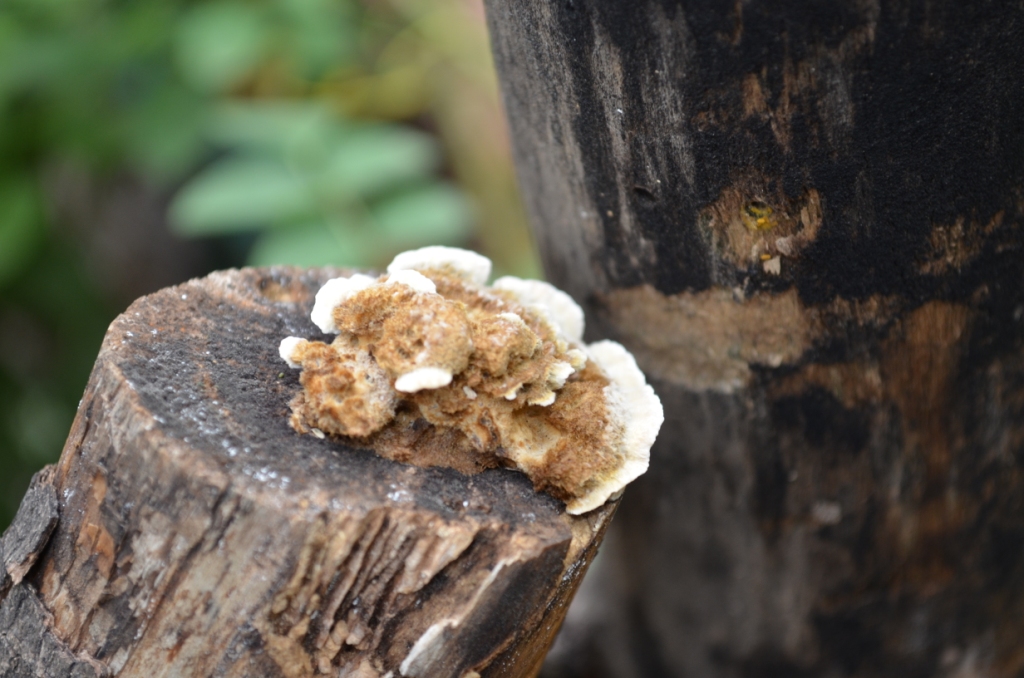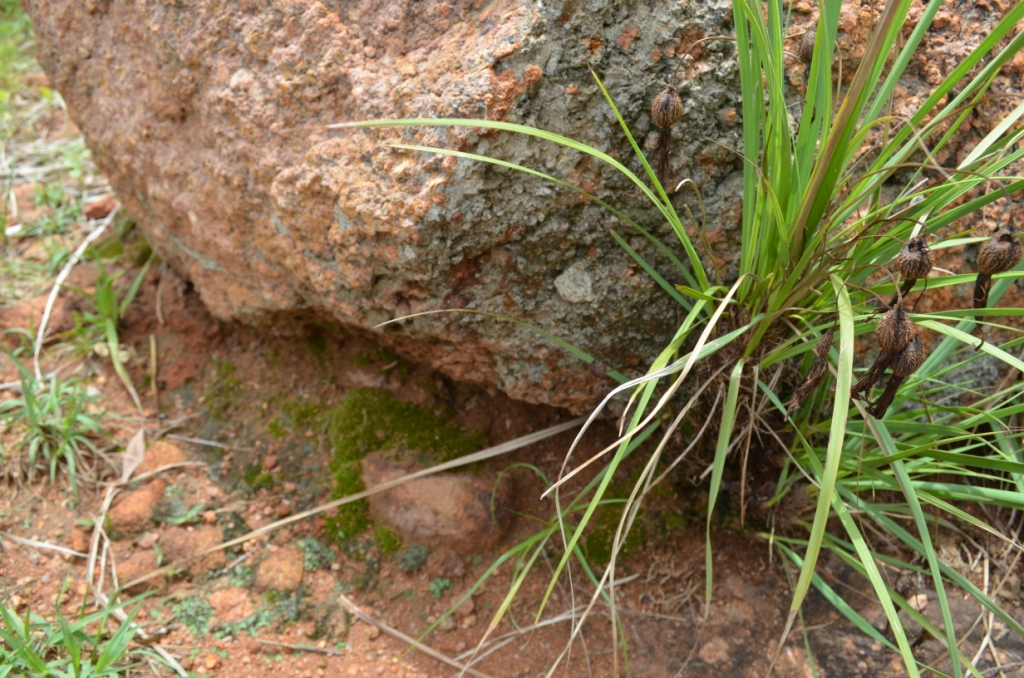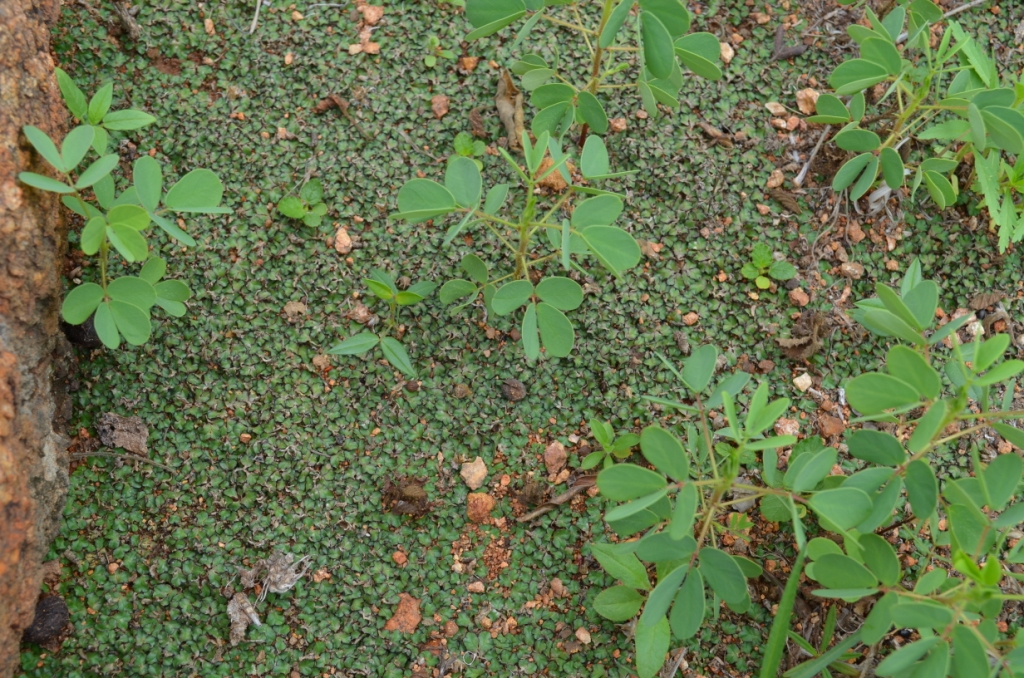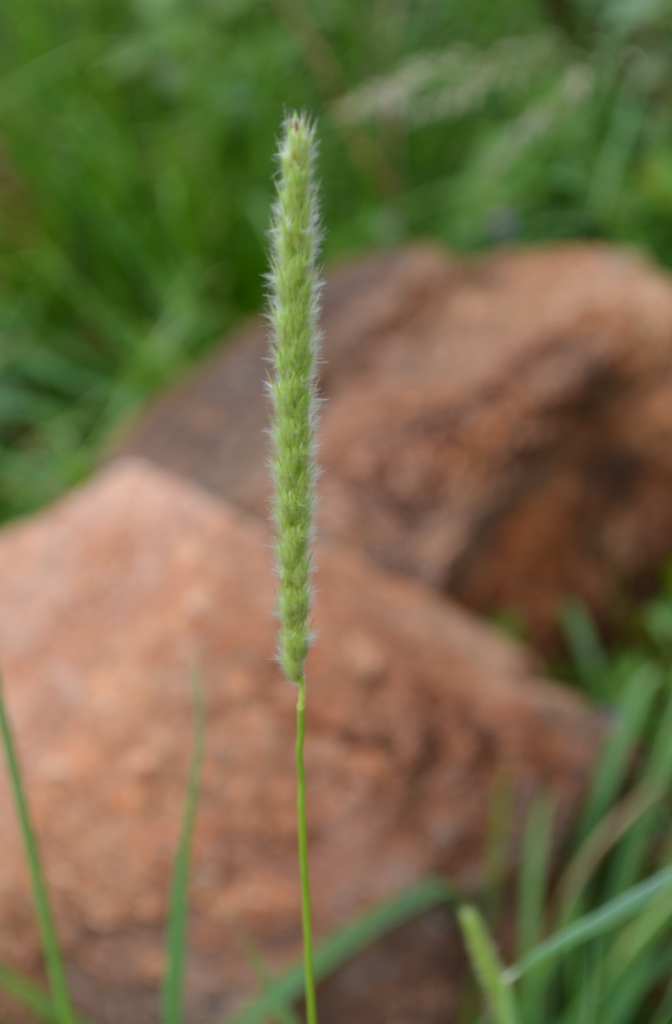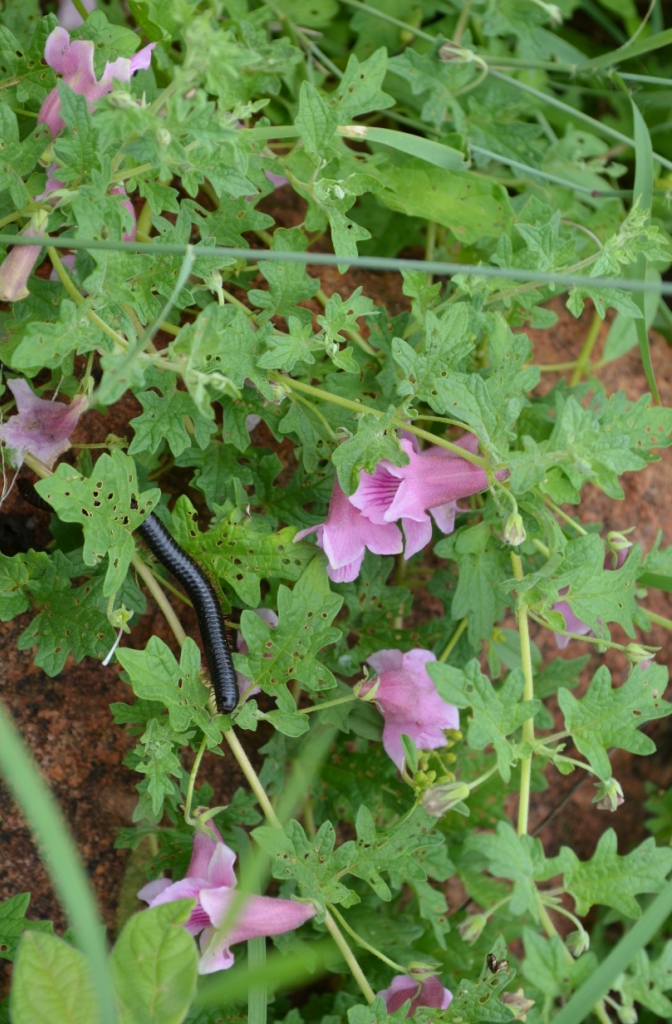18 Dec – 31 Dec: While I was away we had 46mm: Foxgloves are flowering, Grasses are now at least a metre high, and everything in the yard seems to have enjoyed the hot sunny days. Unfortunately there were a couple of casualities, the Goji berry – but a small one has still held on, a loved italian oregano, the summer savoury, and a few of the tomatoes. All the pomegranates have ripened, while the Mmilo fruits are still green there are lots of them, and the silver caneberry has sprung up a few more strong canes. The Azanza garckeana is flowering, albeit covered in mealybugs.
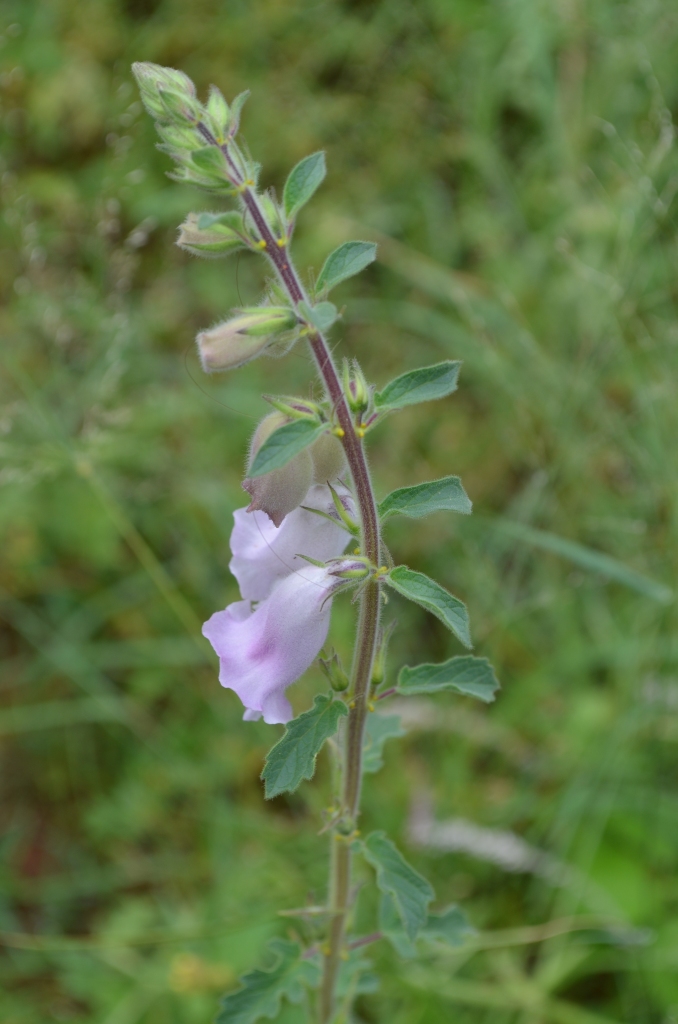
Foxglove 
Wild hibiscus 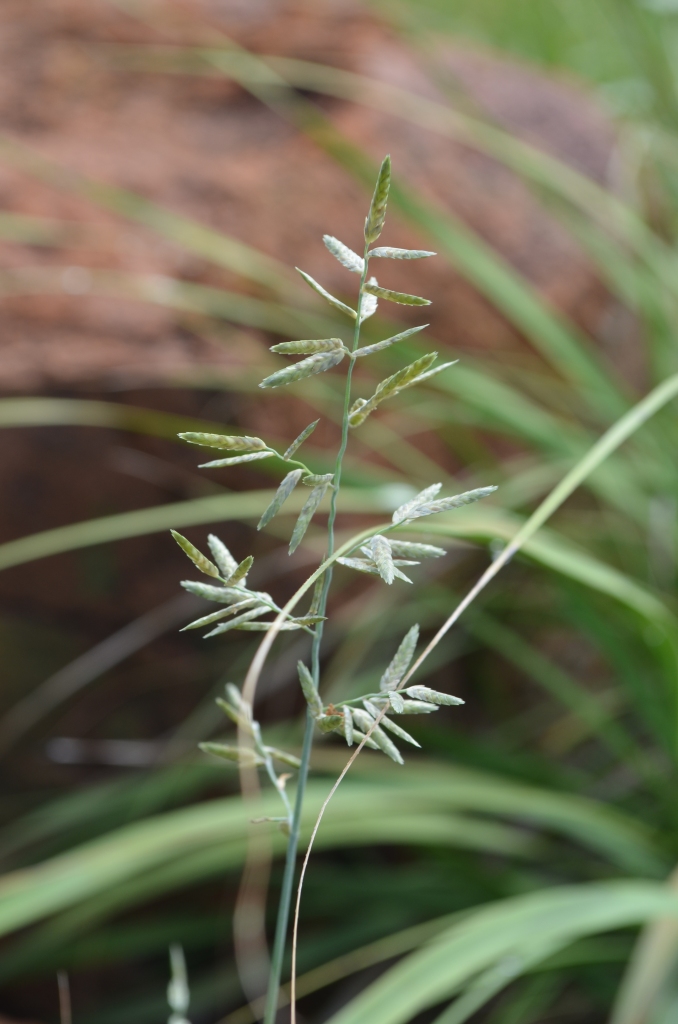
Eragrostis racemosa 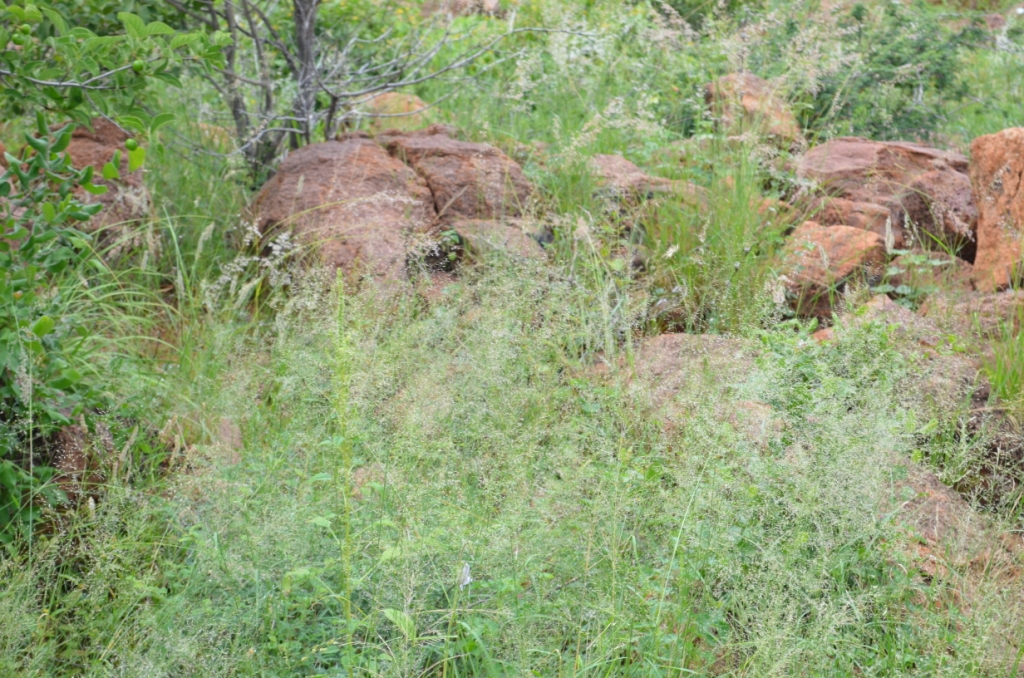
Jungly indigenous garden
16 Dec: Sunny days again, and the days are hot and much more humid than usual.
In the vegetable garden: the Jerusalem artichoke is almost about to flower, the chilis are flowering and fruiting, new rocket seedlings are appearing everywhere, and the potatoes need more mounding up. The Arugula is still doing really well, and as I will probably be away when the Jerusalem artichokes start to flower, I have put a picture below from a previous year to cheer up our Christmas!

Arugula 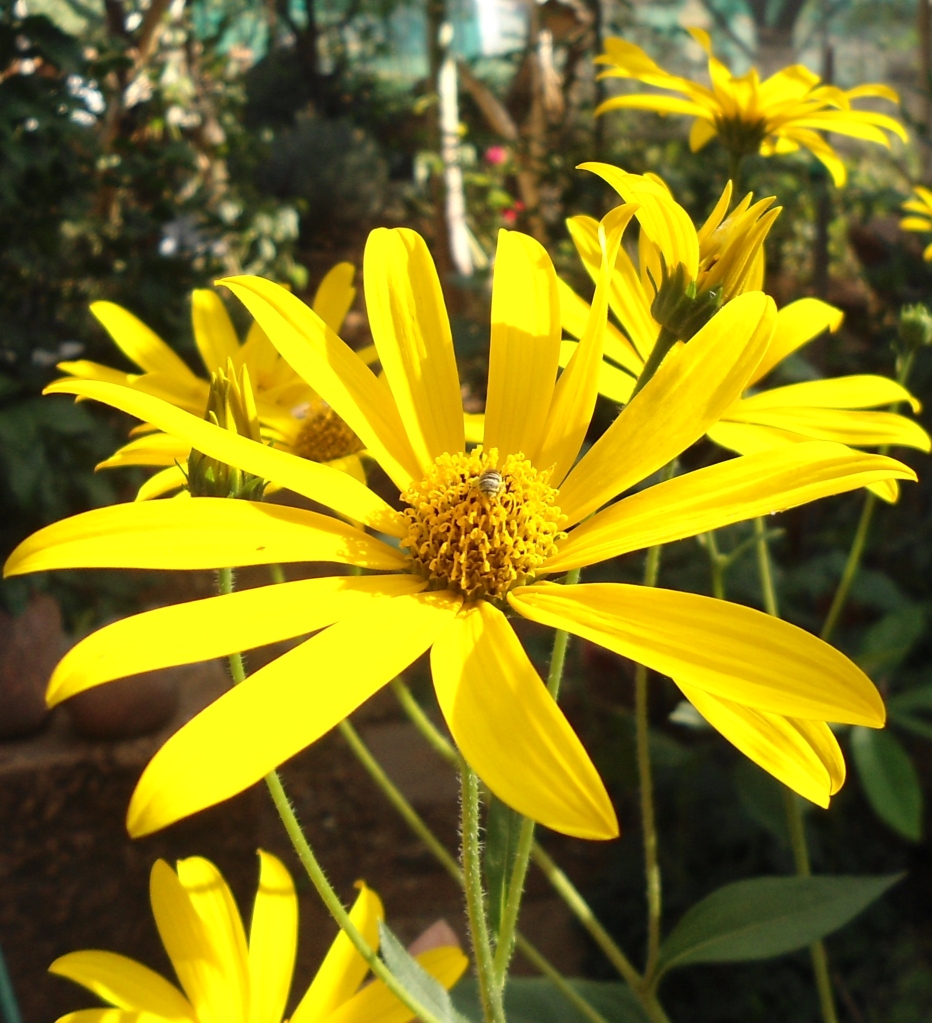
Jerusalem artichoke
In the herb garden: the Ashwagandha leaves are speckling, which makes me think red spider mite, so will have to keep misting it when I can. The parsleys are all doing well, flat and curly. The sage has died, but I think next time, I’m putting it in a pot, as it was probably the soil fungus that got it (Phytophthora). The oregano, lavender, rosemary are still doing really well, and the gotu kola’s leaves are a little yellow-green, which is either under or over feeding, and as its by my goat manure path leading through the garden, I think its probably burn from the manure. The spearmint has done much better after the rain and high temperatures than the peppermint – which had gone a bit too rogue, so I’m happy the temperatures have curbed its spread. The Mexican Chia is about to flower, I’m just hoping it will rain while I’m away.
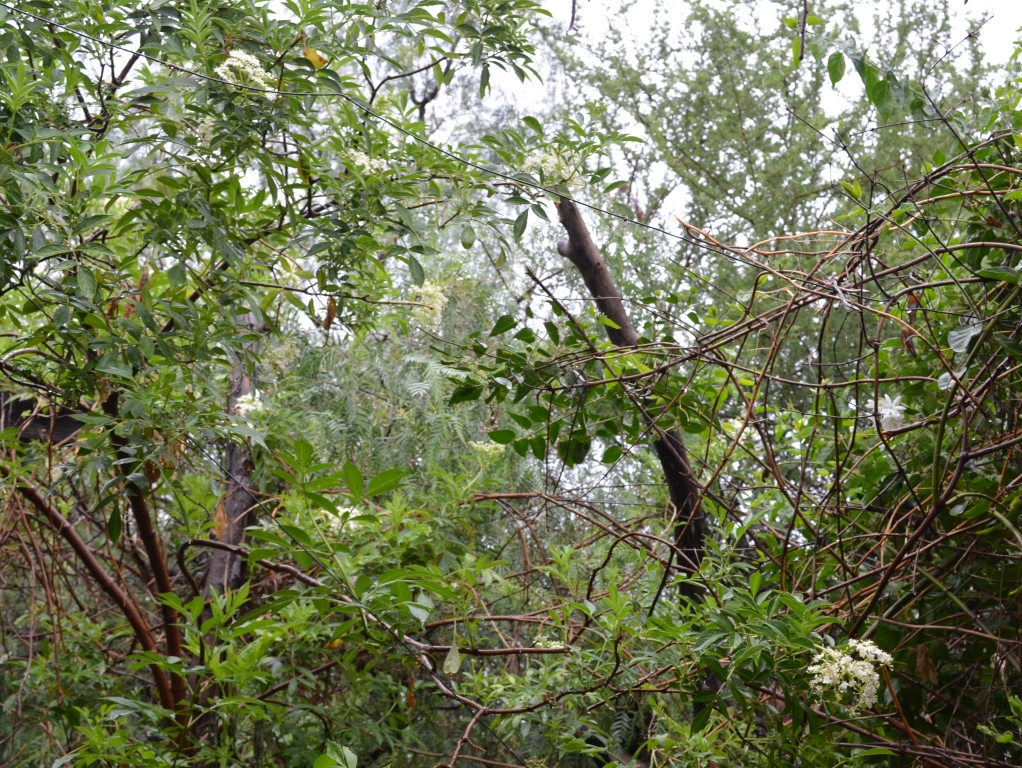
Elder and Arabian Jasmine compete for space
In the fruit garden: the huckleberries are still fruiting despite the mealybug, and the cape gooseberries have not been overwhelmed by the mealybug like previous years, and are putting a lot of fruit. The silver caneberries are springing back after the rains, as they love lots of water. The goji berry didn’t like me putting it in a dish of water, and has been battling with mealybugs too. However when I go away, I will have to put it back in its dish of water. Will see how tough it is. The tomatillos are really flowering prolifically at the moment, but fruits are still tiny. The tree tomato is about a foot high now. The two peaches left on the tree are just changing from their green colour to a more blushy yellow orange.
In the indigenous garden: All the usual suspects are flowering, and to add to the list are: Holubia saccata; an unidentified basil type plant; tiny ledebourias that are yet to be identified; another mollugo type plant; have a look at the deluge of photos below. The bride’s bush – Pavetta zeyheri is about to flower, the shepherd’s trees are all shooting up, there is a fully grown Boscia foetida that is sheltering one of the bee hives, but only about a metre high Boscia albitruncas. In a previous post I also put in a grass I believed to be Schmidtia and now the seed is fully developed I think it is Schmidtia pappophoroides.
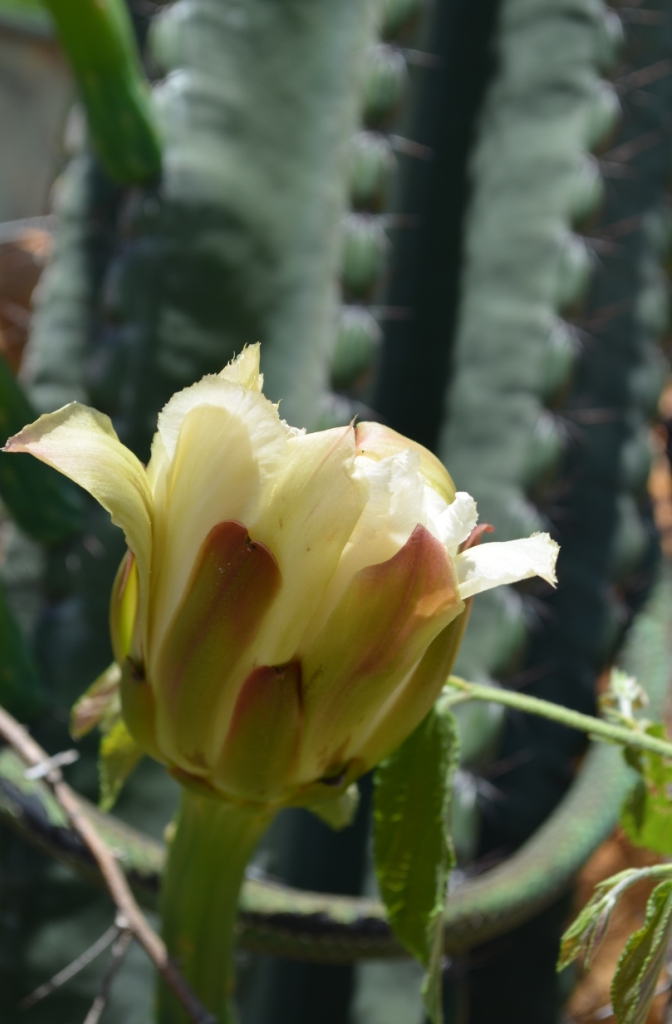
Cereus jamacaru – by the gate, fruits like a dragon fruit 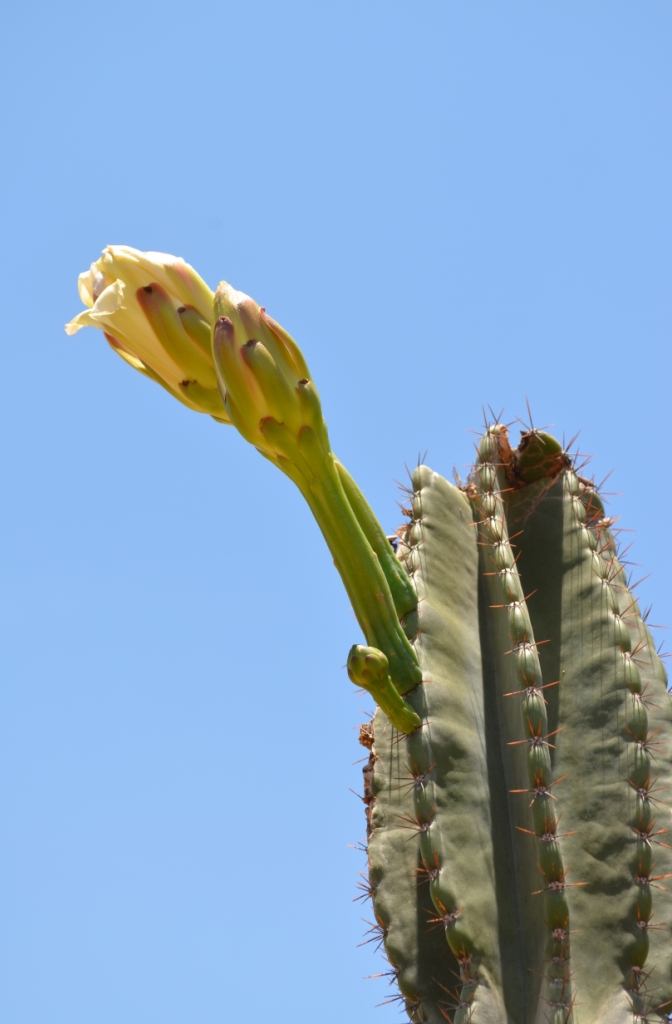
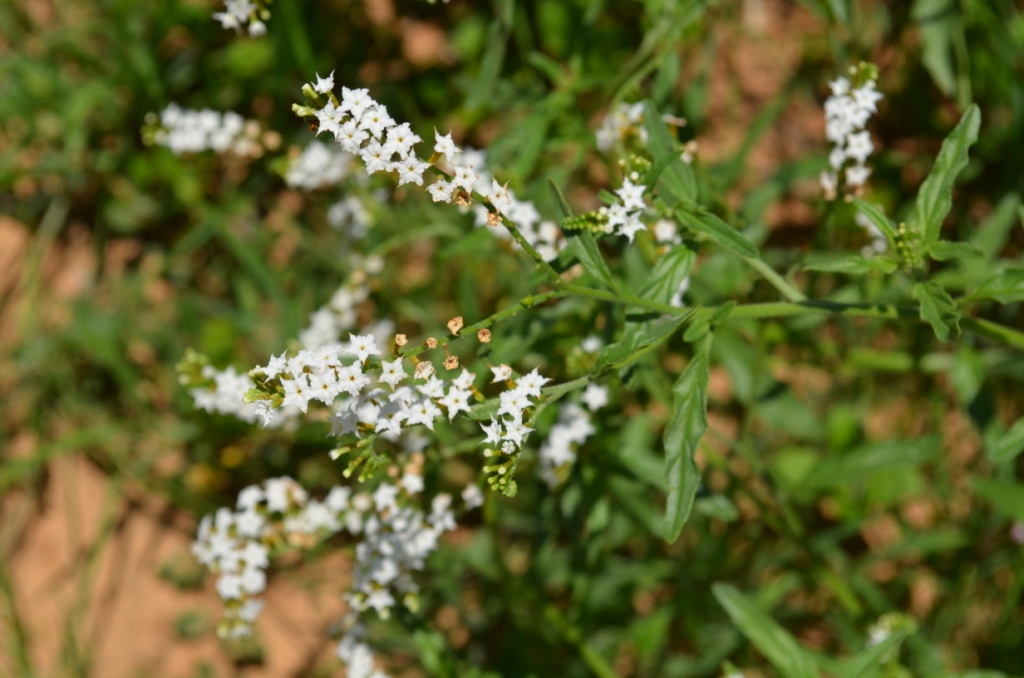
Heliotropium also by the gate 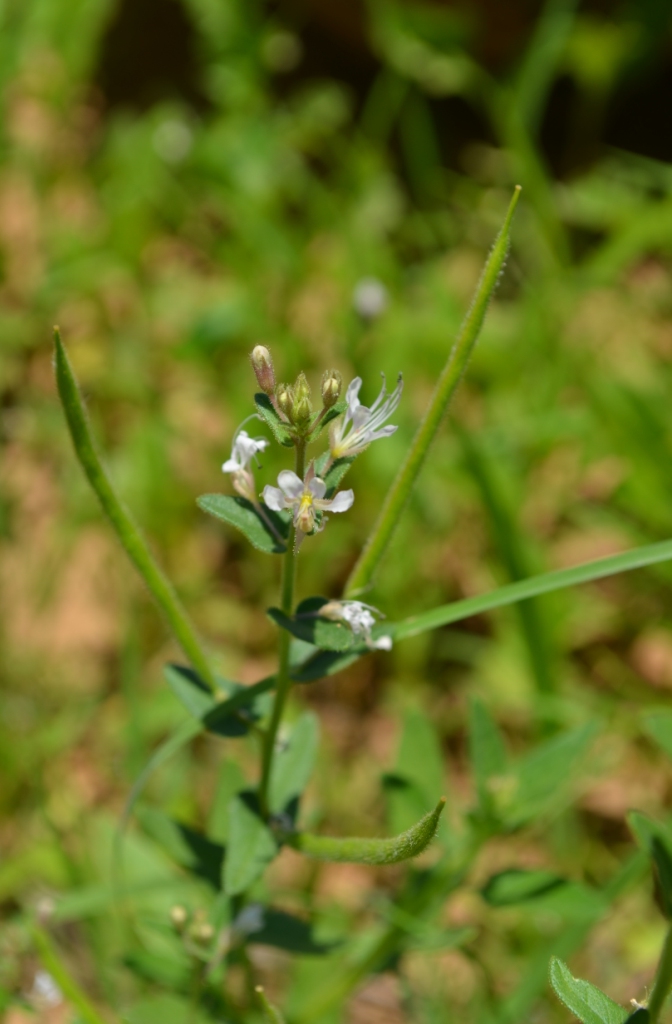
Cleome monophylla 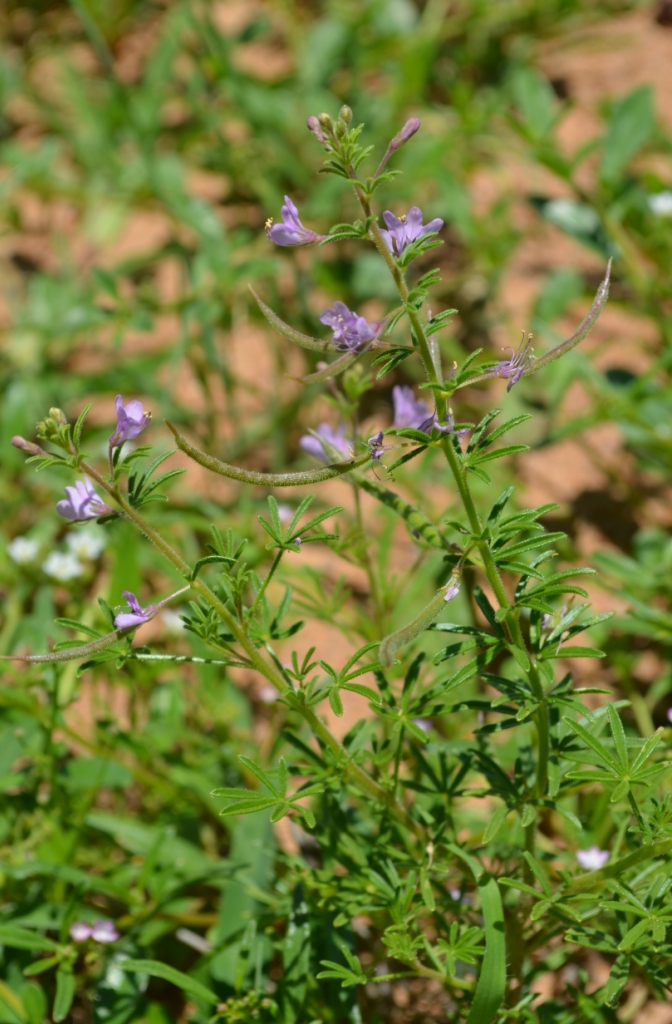
Cleome rubella
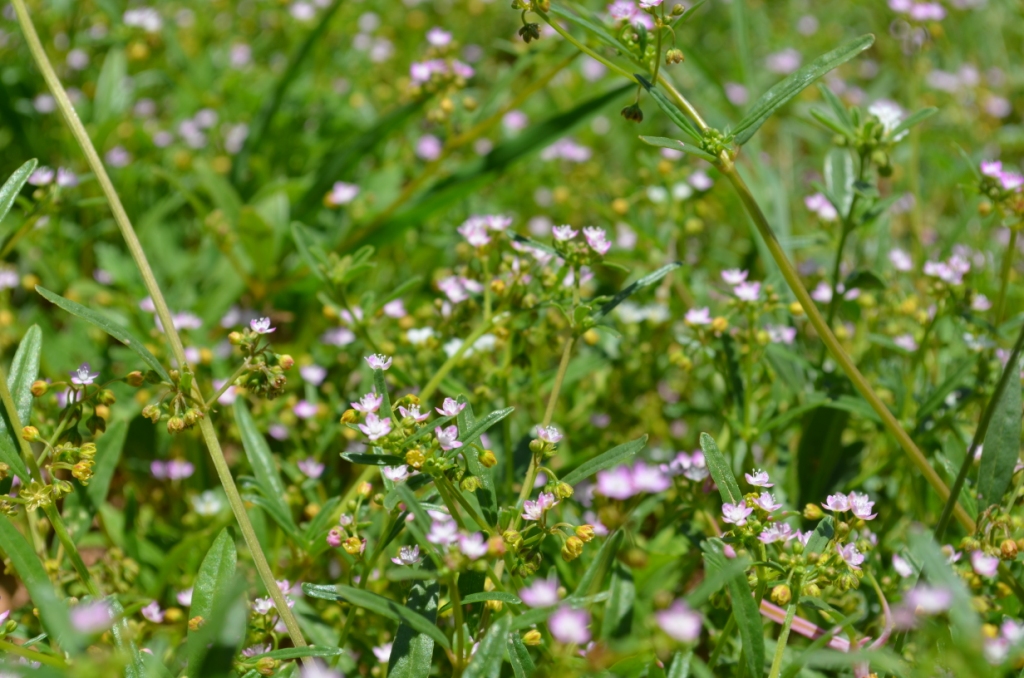
Gisekia en masse 
Weird pink abnormalities in gisekia’s foliage – a virus or bacteria, and gorgeous
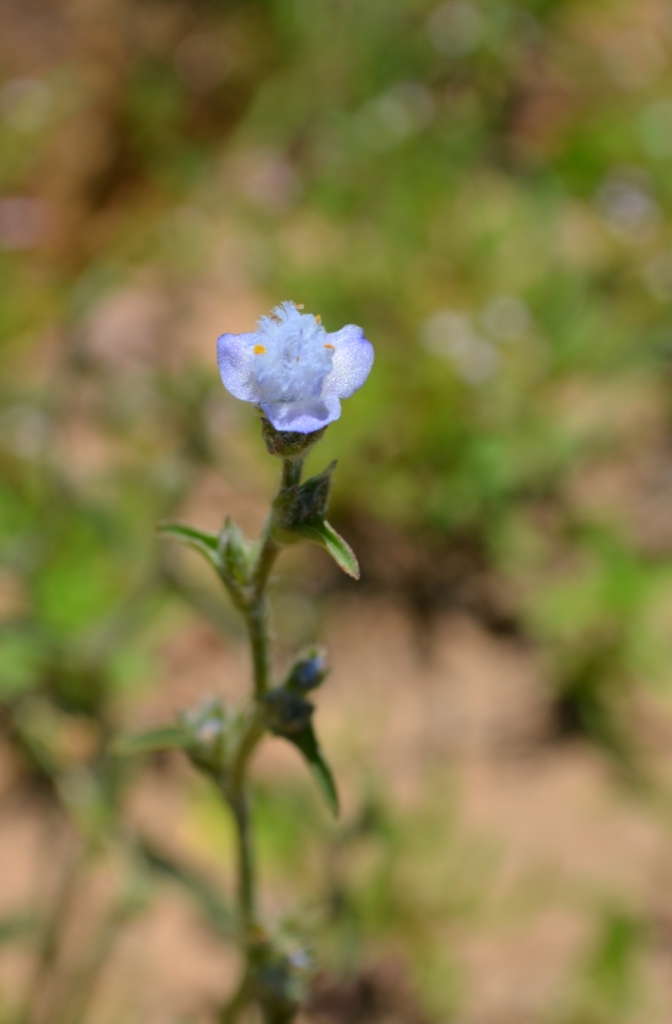
Cyanotis speciosa time.. 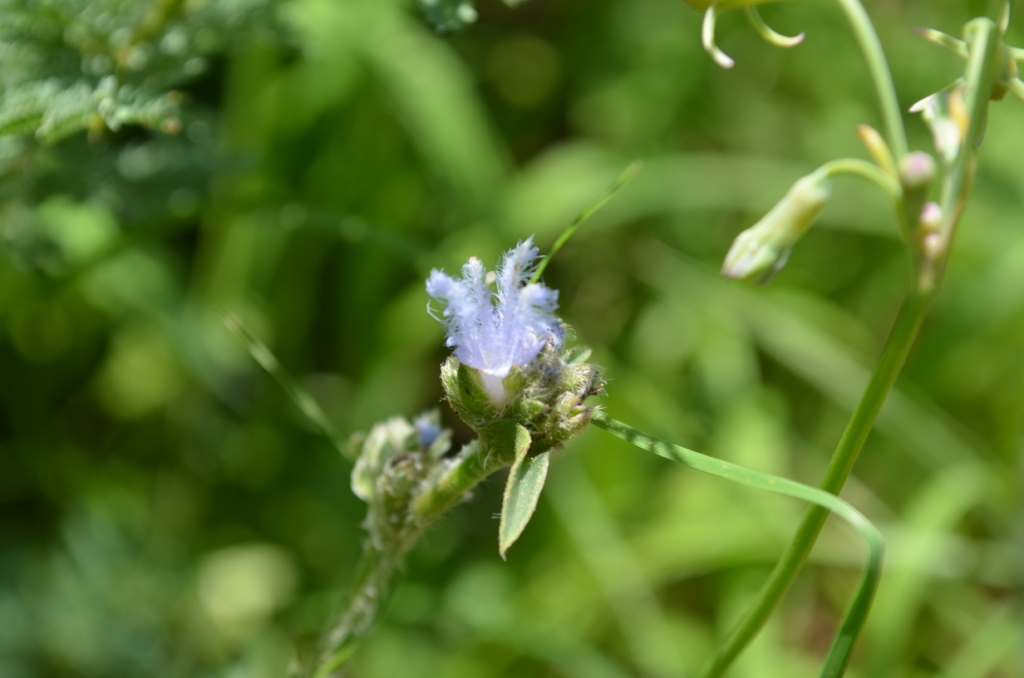
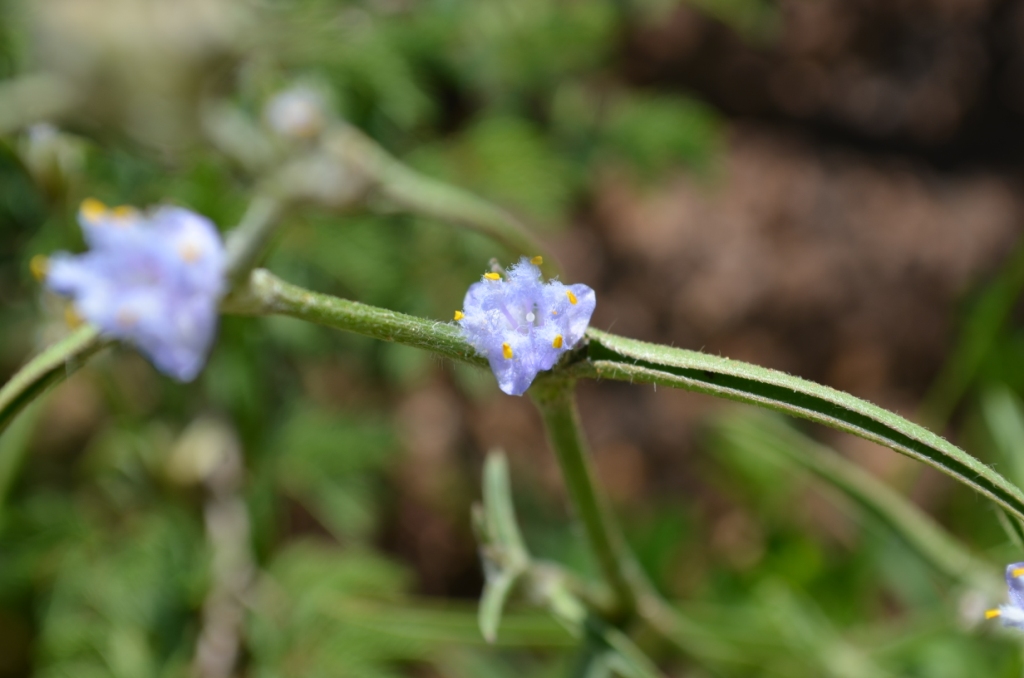
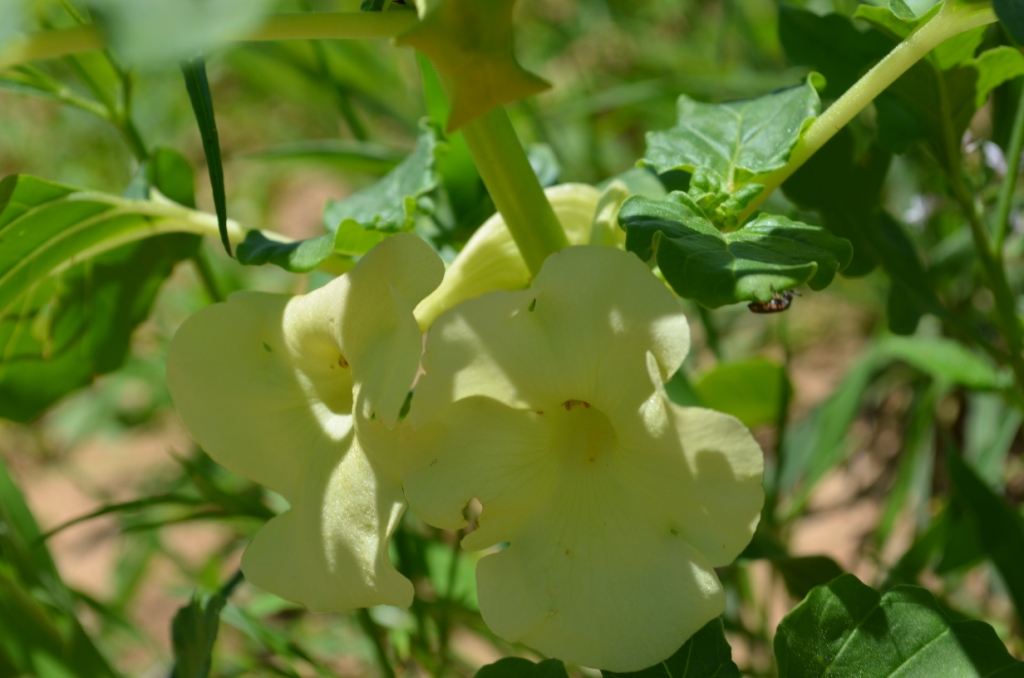
Holubia saccata
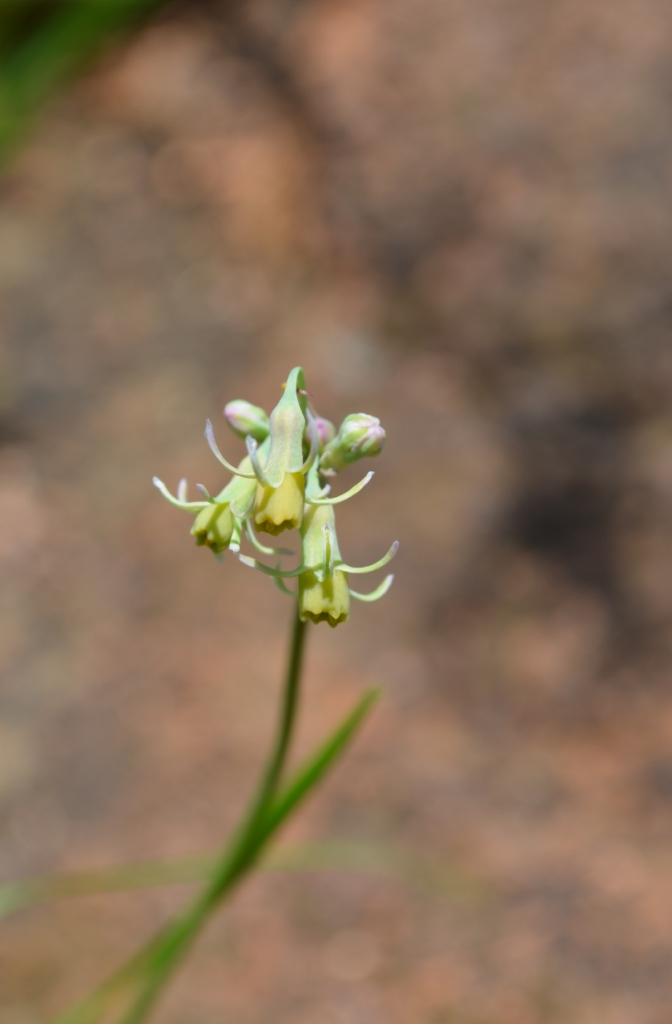
Tulbaghia leucantha 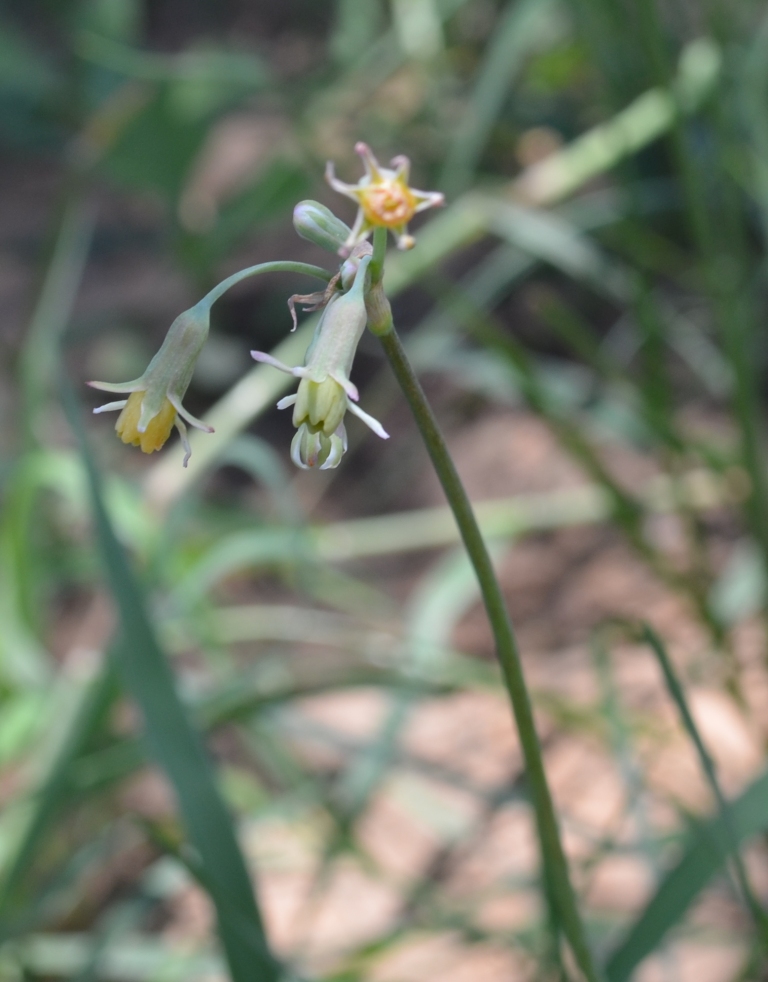
Tulbaghia acutiloba
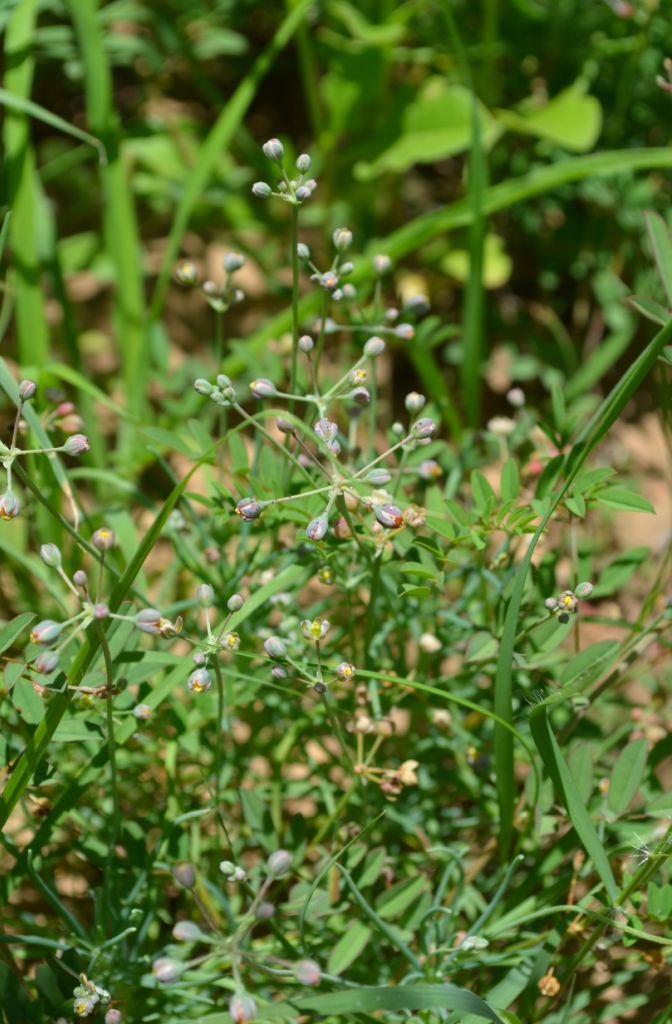
Mollugo cerviana 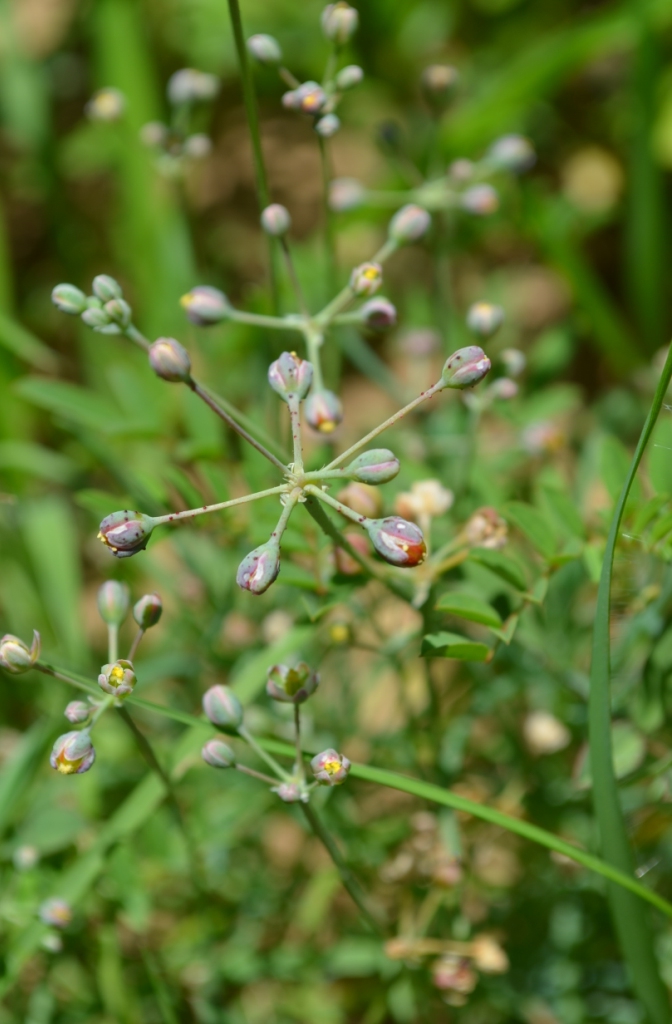
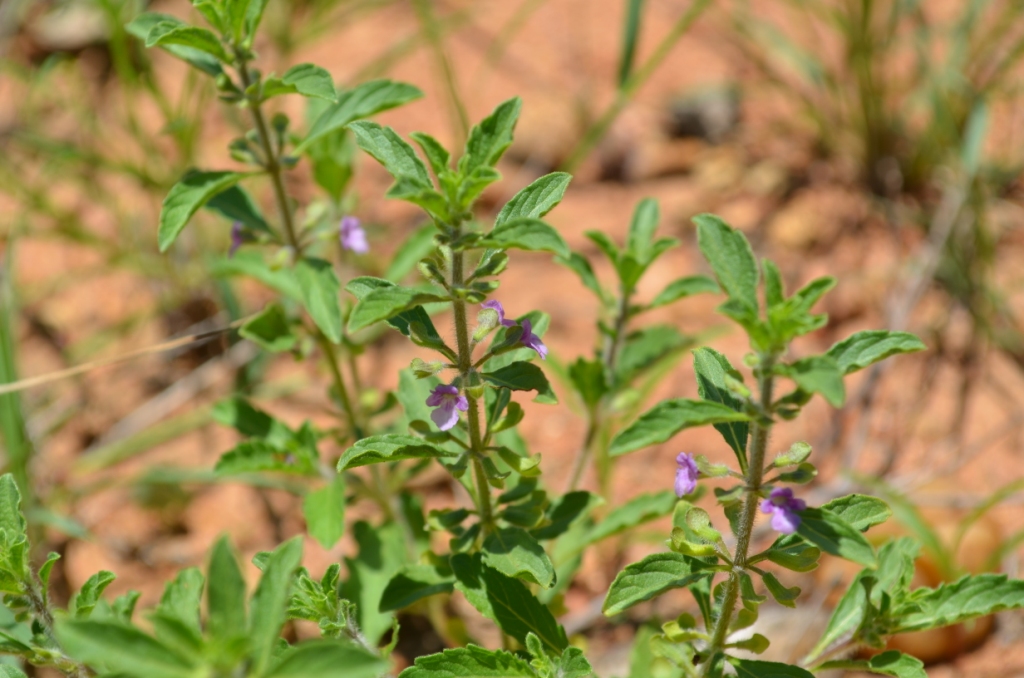
Unknown basil type 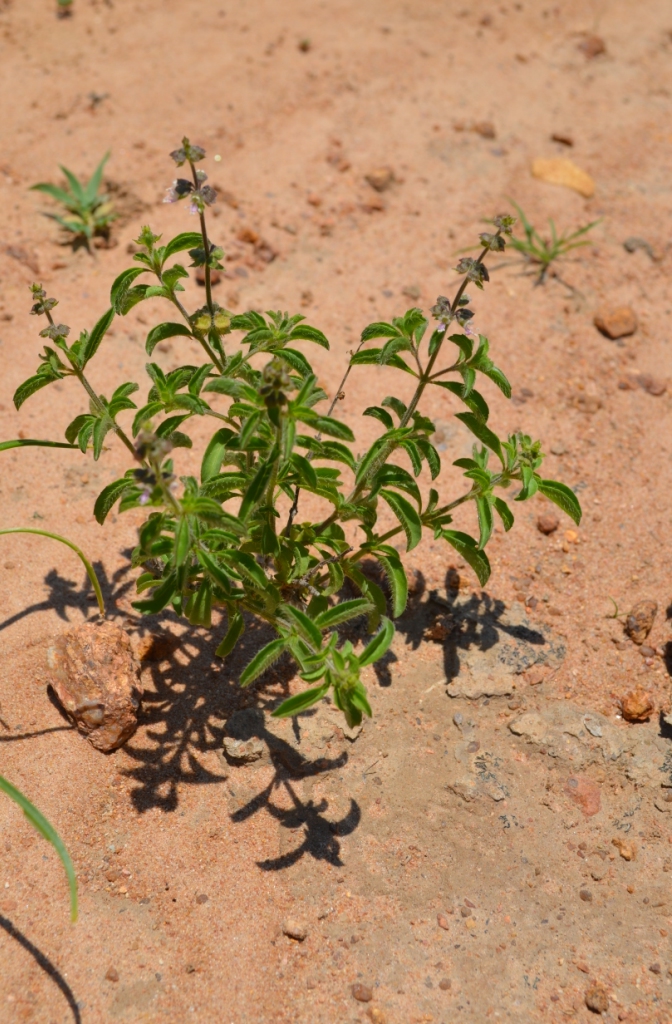
With seeds 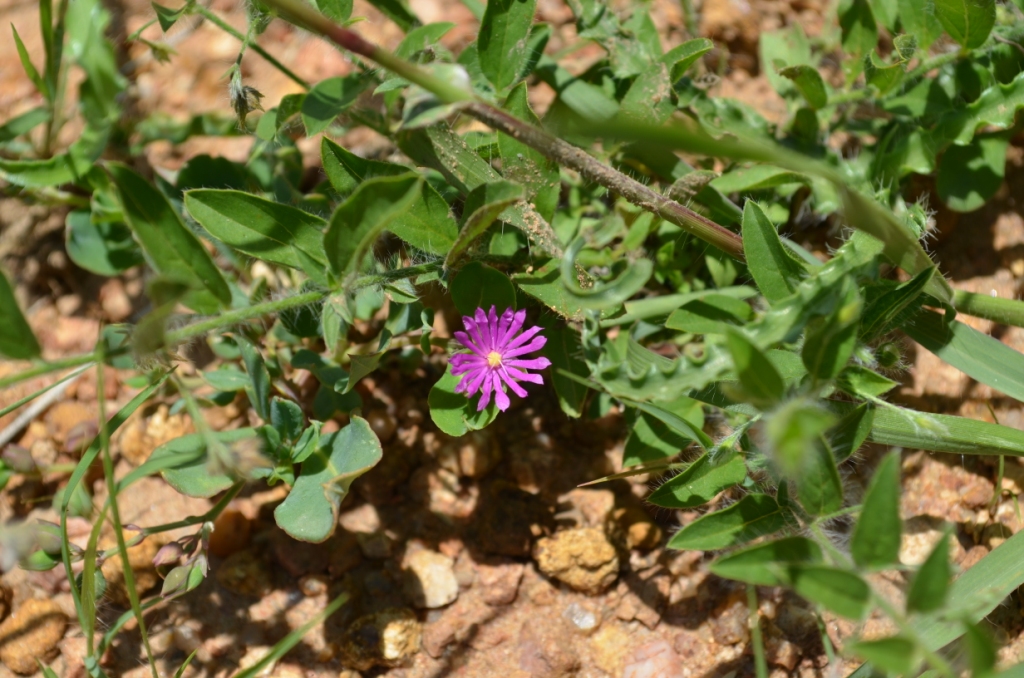
Corbichonia decumbens 
Crinum macowanii
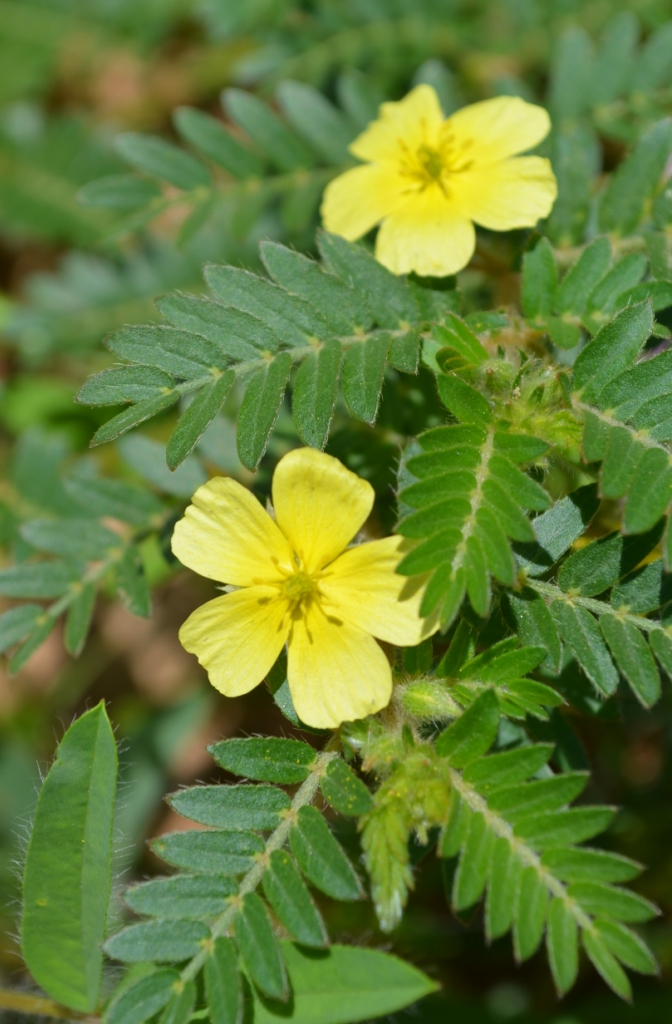
Tribulus terrestris 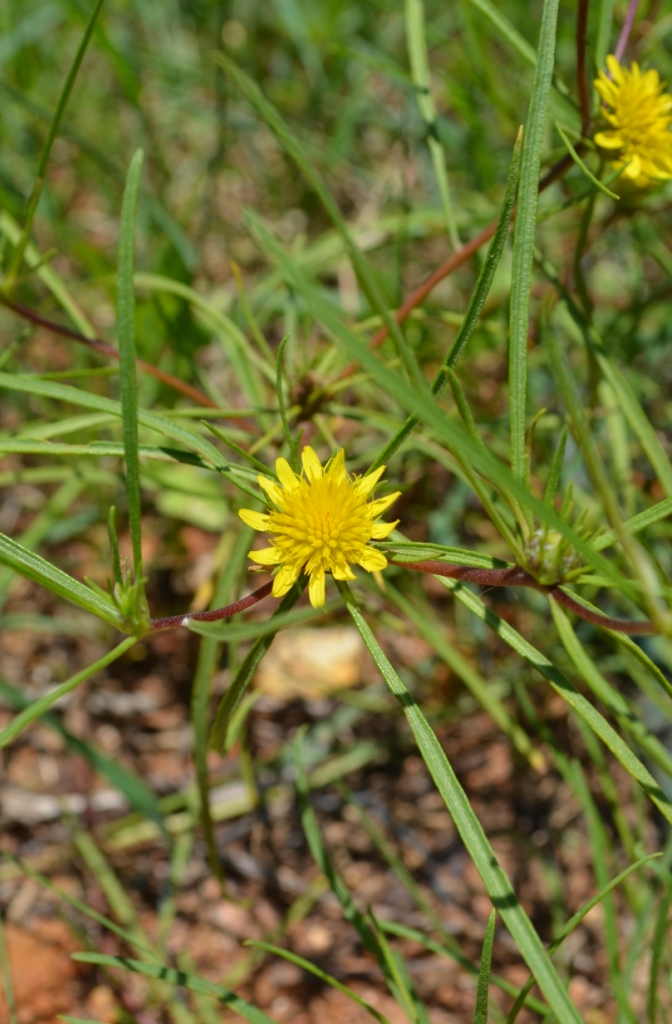
Geigeria burkei 
Erianthemum ngamicum
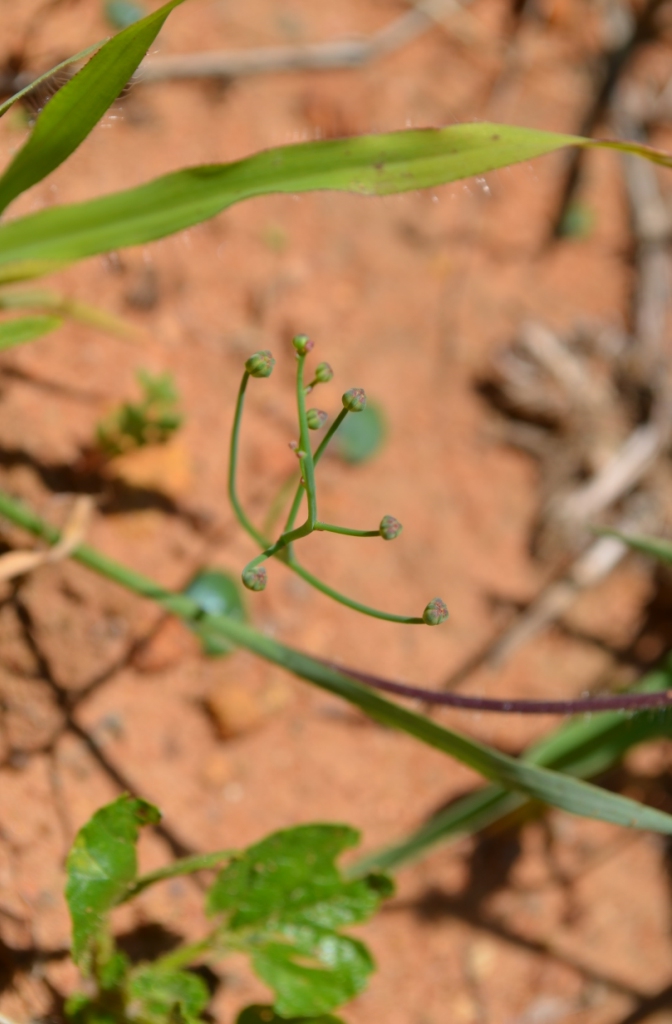
Flowers of a tiny leafed Ledebouria 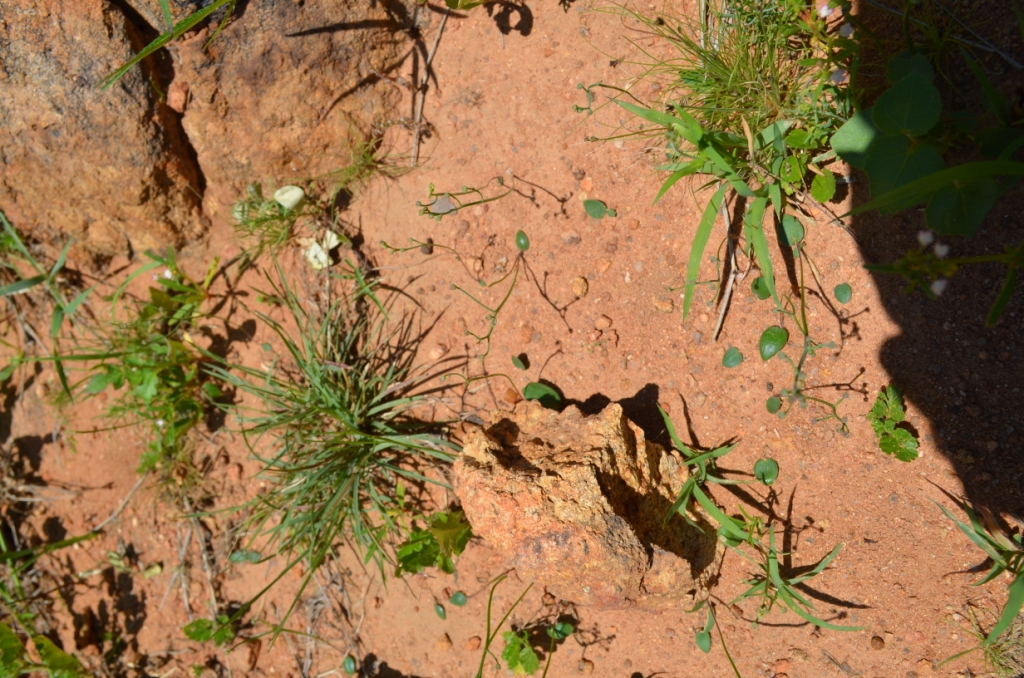
Lots of them
In the fungi world: puff balls and common earth balls are scattered around, plus the tall false ink cap that apparently is found around harvester termite mounds. I see it every year in the same places, they look like yummy coprinus mushrooms except they’re not, but are used in folk medicine to help with cancer. If I wasn’t travelling I would have tried one of the Agaricus species that has popped up, which I think is the rare Agaricus augustus. There are only two other Agaricus species that are similar and slightly poisonous, but I shan’t risk it. In an earlier post I thought I had identified a mushroom as the honey mushroom Armillaria mellea, but I was wrong, I did the spore print and it came out biscuity pink, so now I think it is Lepista sordida, which is little known and apparently quite rare. If you are an expert, perhaps you could let me know.
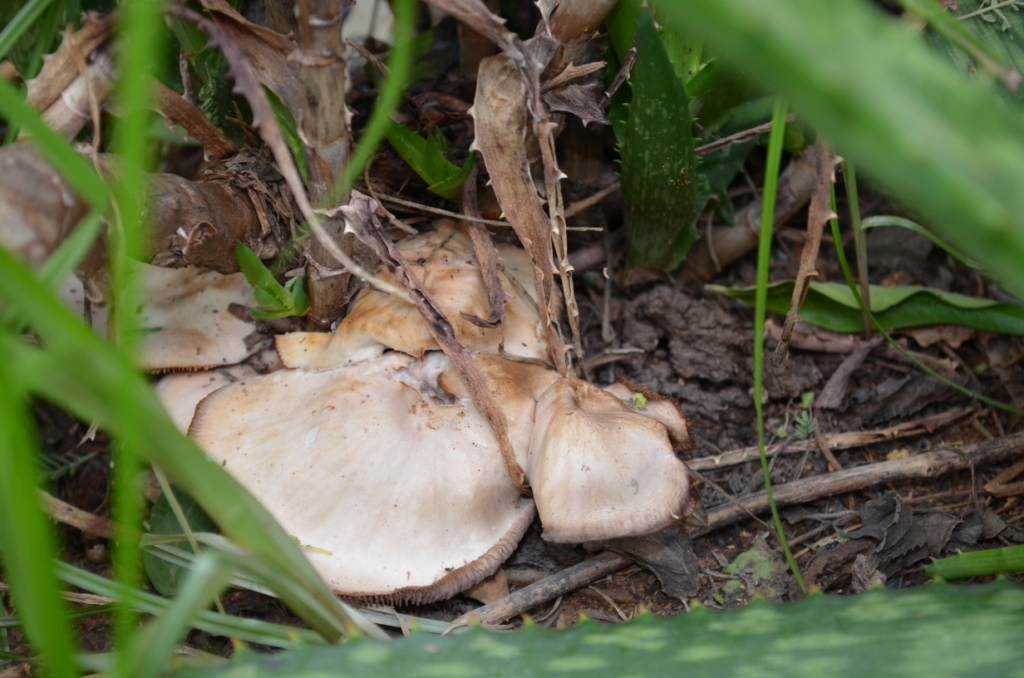
older 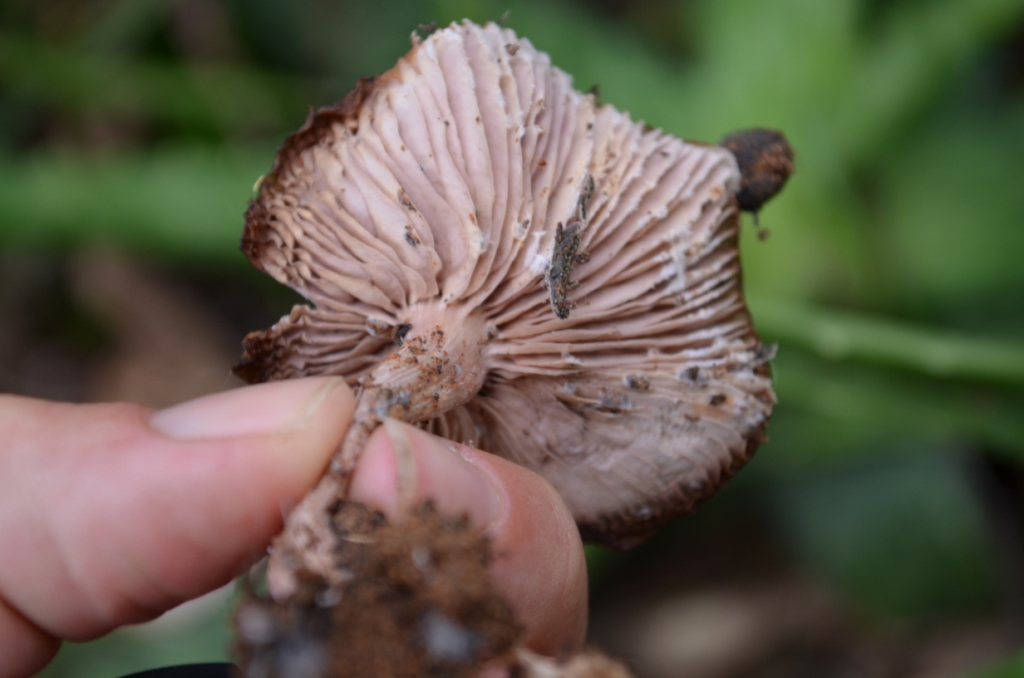
under 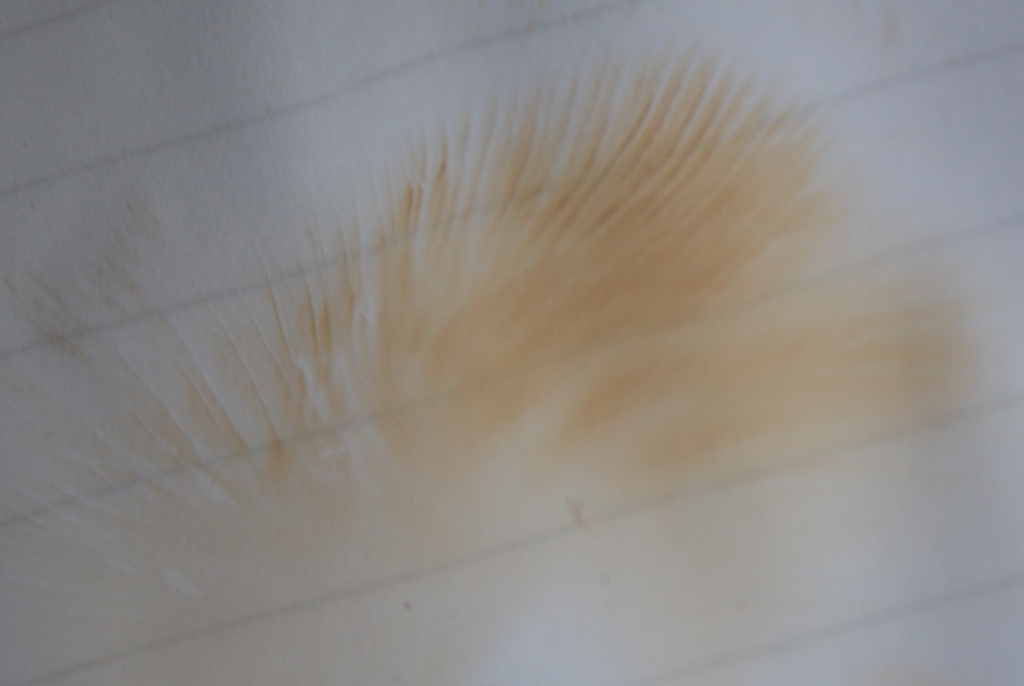
spore print 
Lepista sordida possible

Agaricus augustis or campestris? 
No ring 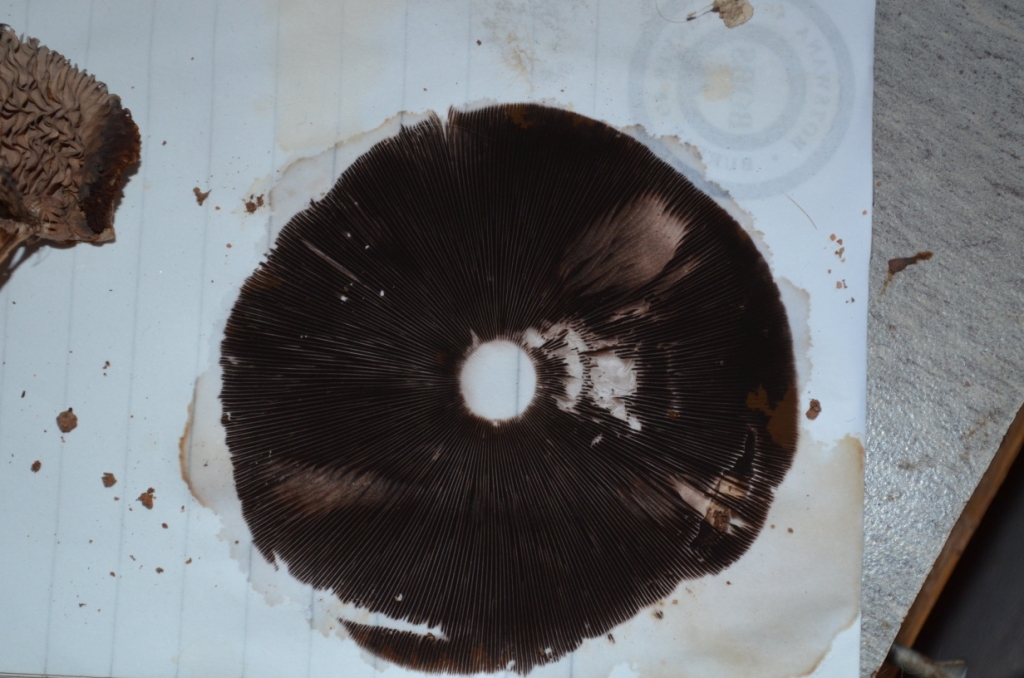
Spore print 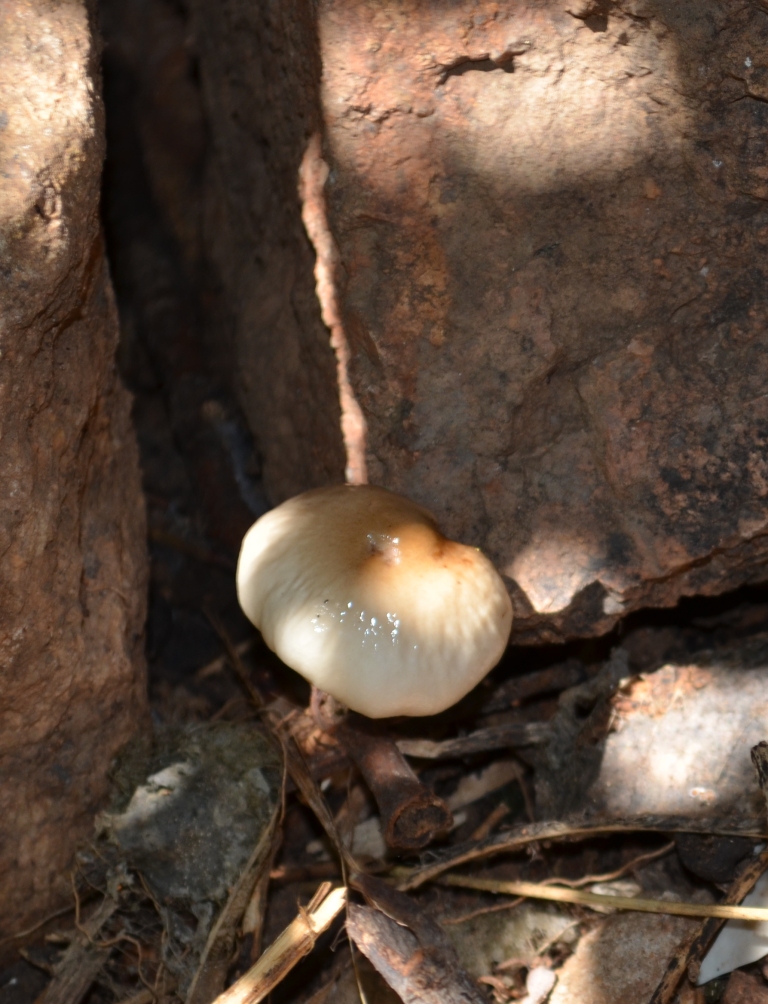
Soapy toadstool – Tricholoma saponaceum 
False ink cap – Podaxis pistillaris 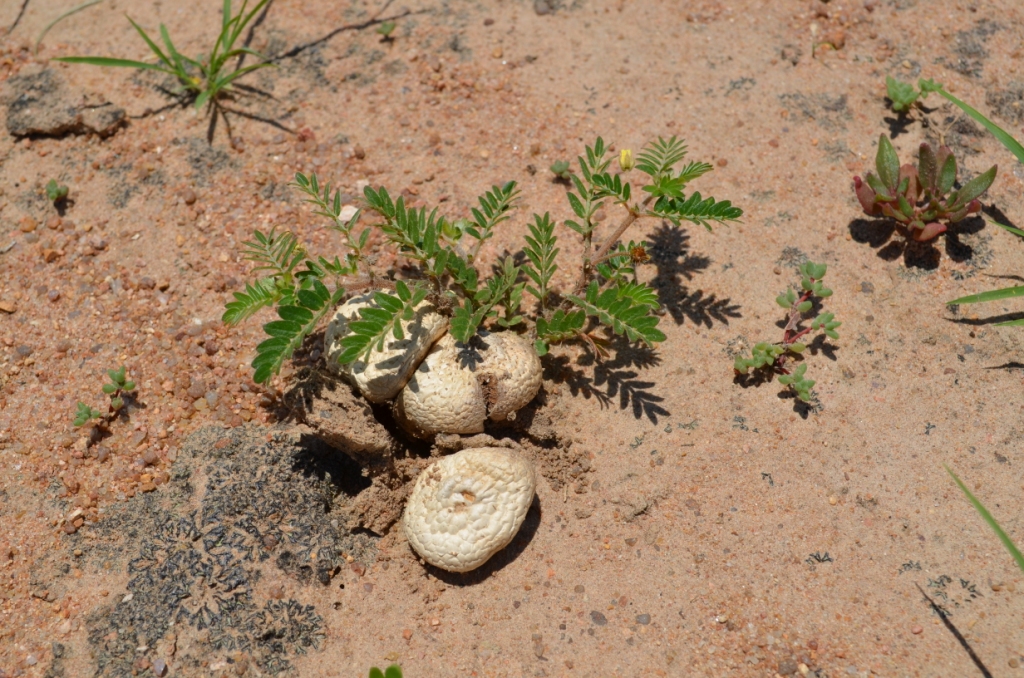
Scleroderma citrinum or Pisolithus tinctorius
In the garden: I’ve splurged on more bromeliads to fill the vacant spots of the Statice and Gauras. one was on special at Spar and is really striking. The other is a Tillandsia which I got for a bargain P22 and is just about to flower. The arabian jasmine is flowering non stop and I absolutely love passing beneath the scented flowers. I took some rose cuttings at an absurd time this year just before the good dose of rain, however it paid off as many of them seem to have taken.


Rose cuttings 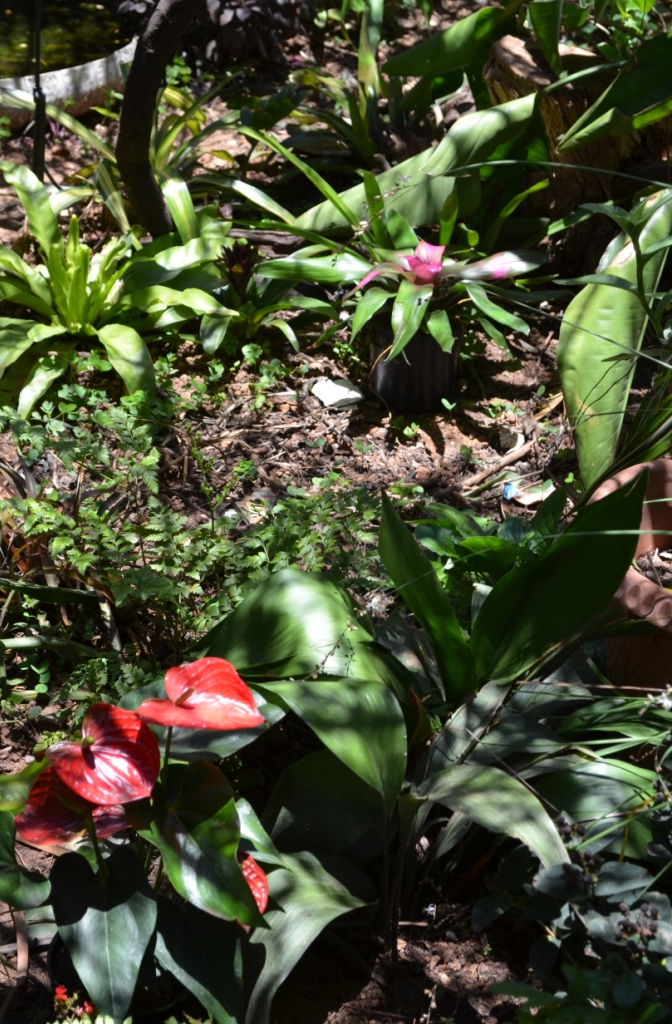
Filling in the gaps
On a sad note, I had to take one of my cats to the vet, Poley, as she had developed cancer. She was a white cat, and they are more susceptible to the sun, so if you have one, make sure you put sunscreen on their ears, and talk to your vet about what to do to prevent cancer developing.

9 Dec – 30mm; 10 Dec – 10mm plus an afternoon thunderstorm of 20mm
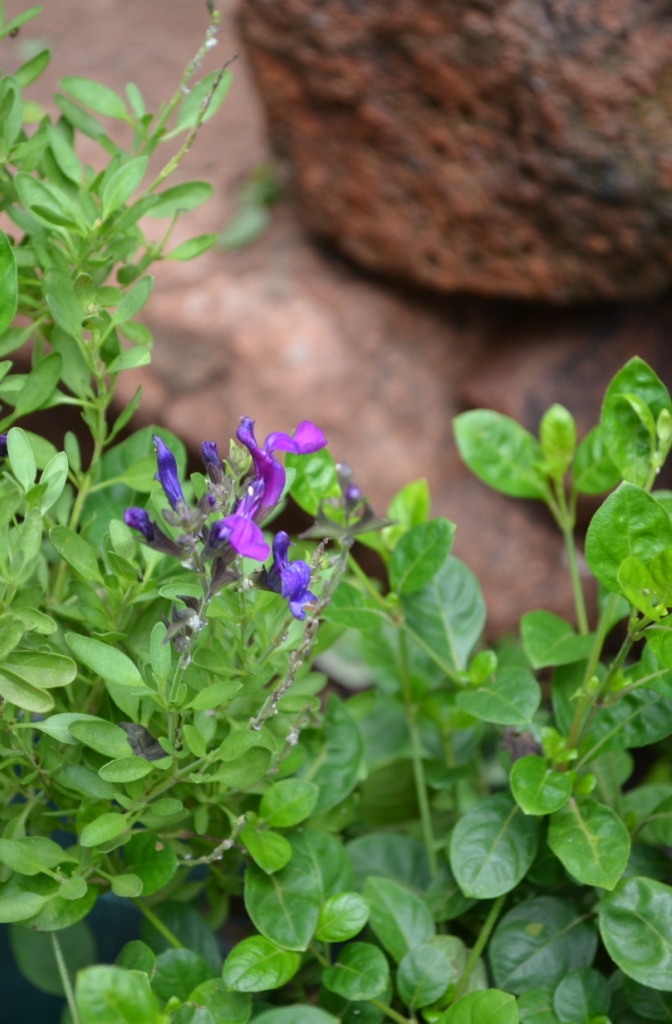
Salvia and Barleria 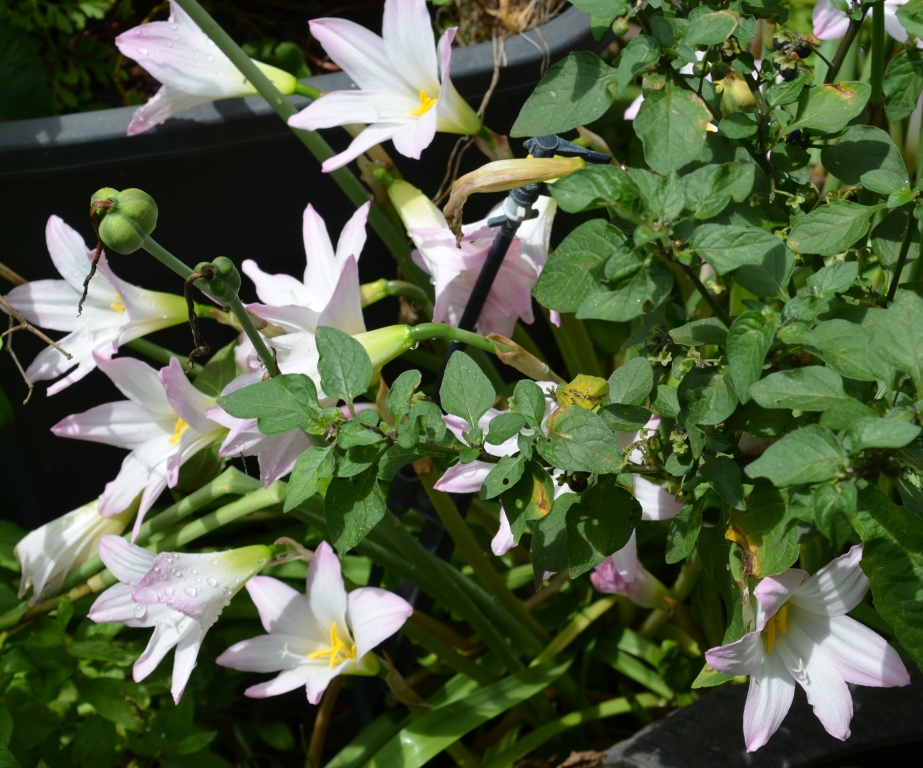
Zephyranthes – rain flower
With the rain, the indigenous garden has thrived, and most plants in the other gardens, however a few appear to have contracted a disease, in some – the leaves have gone brown overnight and I suspect it could be phytophthora, a fungus that usually occurs when the soil is overly wet. Unfortunately the Statice, Gaura, Sage and Nectarine have all gone into a decline since the rains. However with our customary variation from season to season, other plants will thrive, and while I do sometimes retry certain plants like the Avocado, sometimes it is best to learn what does well, and stick to those. Like fungi – definitely thriving:

Lepista sordida possible 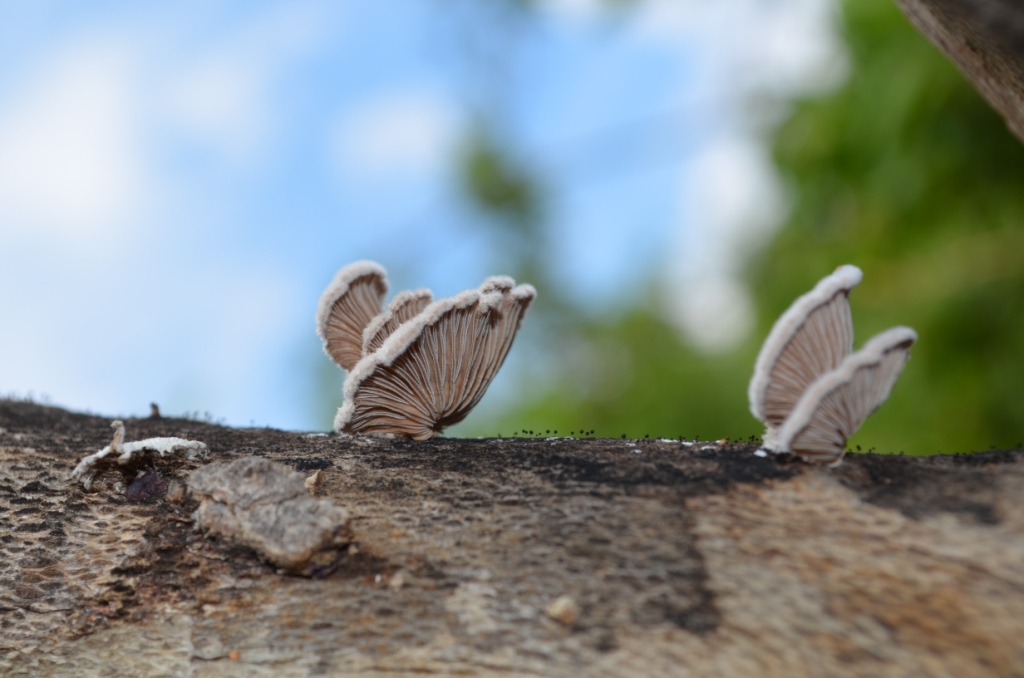
Possibly Crepidotus variabilis or a Lentinus
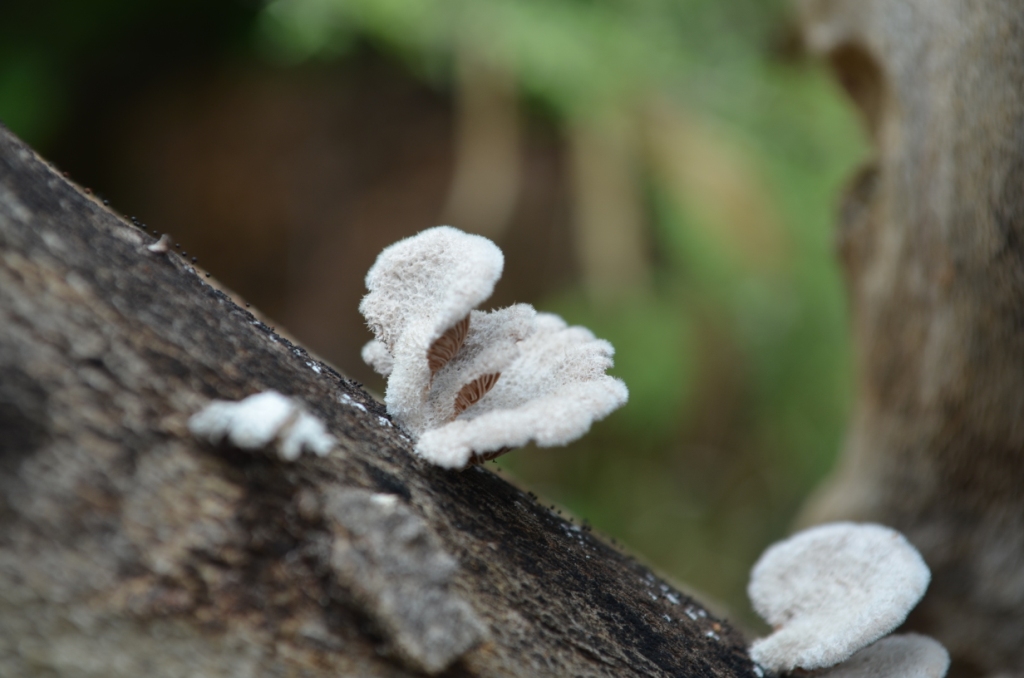
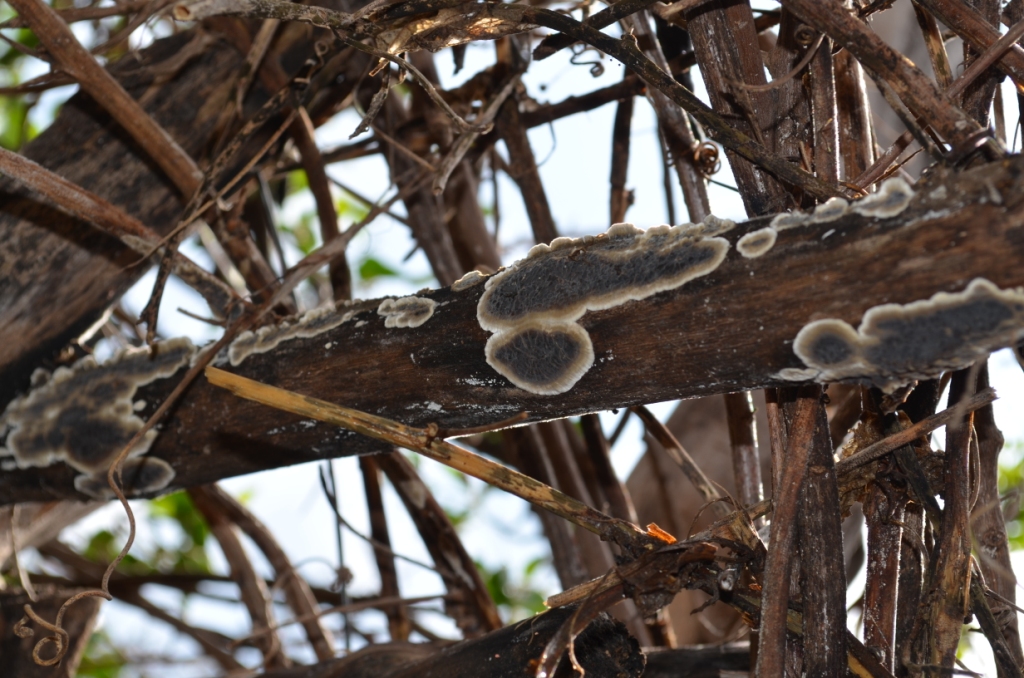
In the vegetable garden: All the veggies have responded well after the rains, the chilis especially, and the tomatoes too, the extra rainfall did cause a lot of the tomatoes to split, but they tasted yummy all the same. Beans are sprouting all over, and I’m hoping that while I’m away there will be some more rain to keep them going.
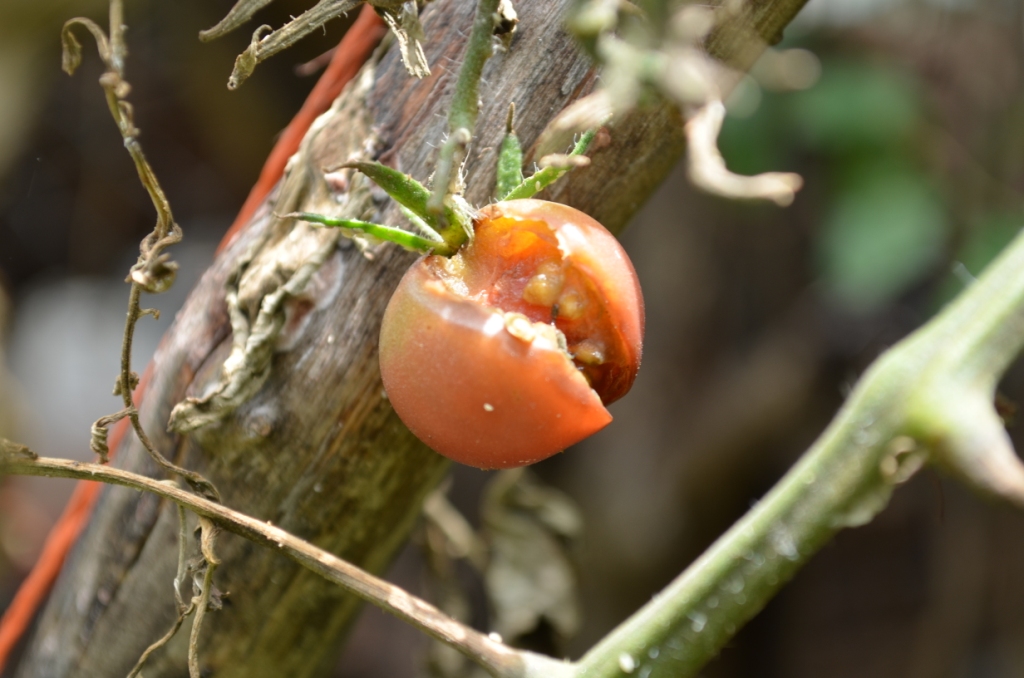
In the herb and fruit gardens: The tarragon and sage seem to be suffering after the rainfall, but all the others are springing into action, especially the basil, mint and oregano. The peaches have split; the silver cane berry which adores water is shooting up new canes, but quite a few granadilla flowers were blown off by the rain.
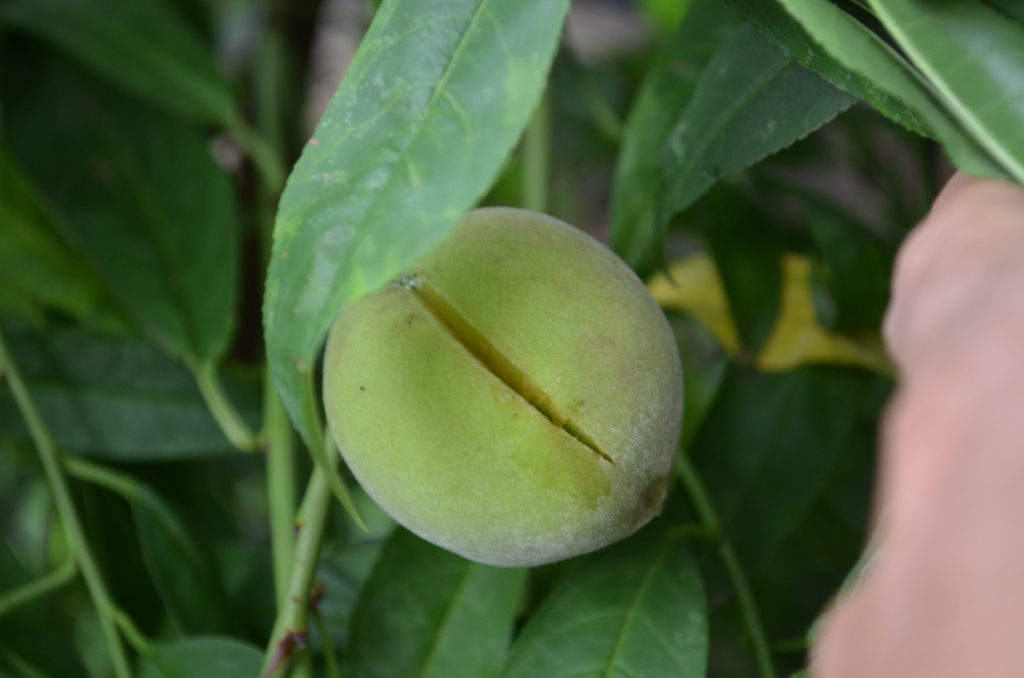
Peach
In the indigenous garden: all the Cleomes have started to flower, the Corchorus, Corbichonia, Cyathula and Cyanotis, plus Tulbaghia acutiloba or leucantha, and Kohautia virgata. The leaves of the Lapeirousia have just emerged, and this time there are no goats to mow them down. All the trees are doing amazingly, and even the Azanza garckeana looks set to resist the mealybug this year. Croton megalobotrys or the large fever berry, has fruited, and the weavers inexplicably enjoy tearing off its leaves.
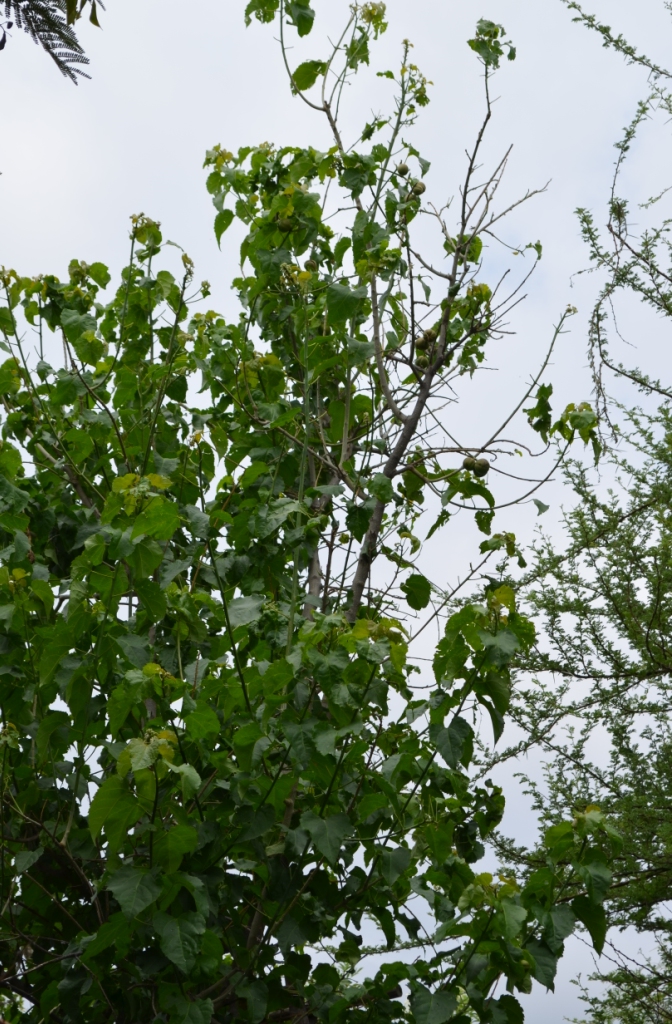
Croton megalobotrys 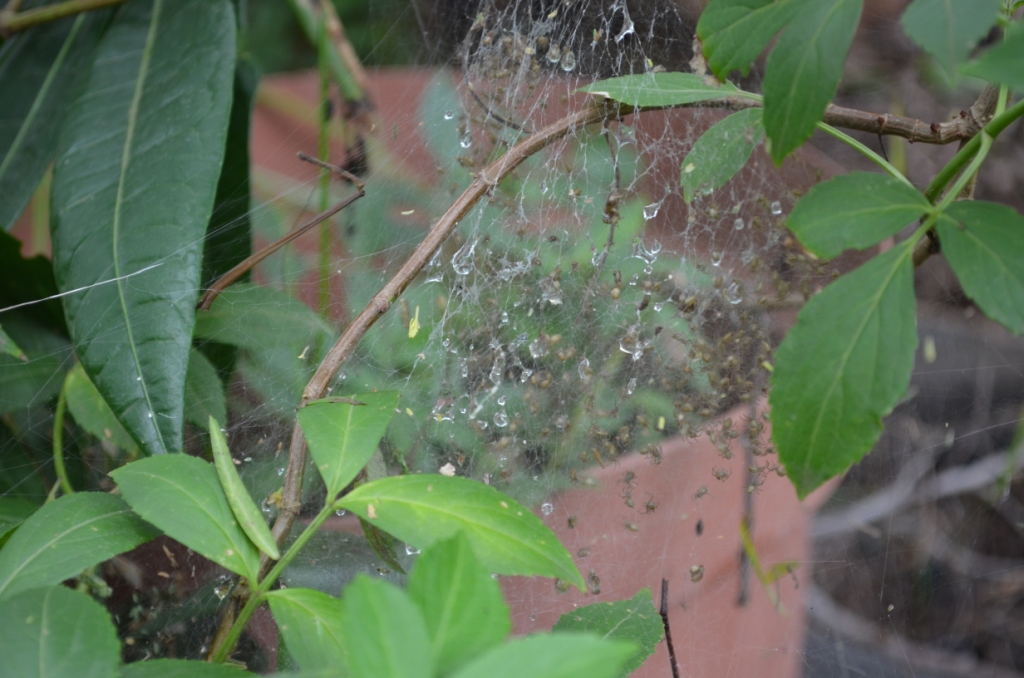
A mass of baby spiders
In the pond gardens, the catfish are swimming in the largest amount of water ever, as our newly fixed pond filled up to the brim with the rains. Situated as it is, at the lowest point, it collects all the runoff from surrounding areas, the boggy channels that lead to it have Aponogeton juncus in flower, and some crinums.
In just a few days – this is how our fungi have developed from the last series of photos:

Lepista sordida 
A little bigger
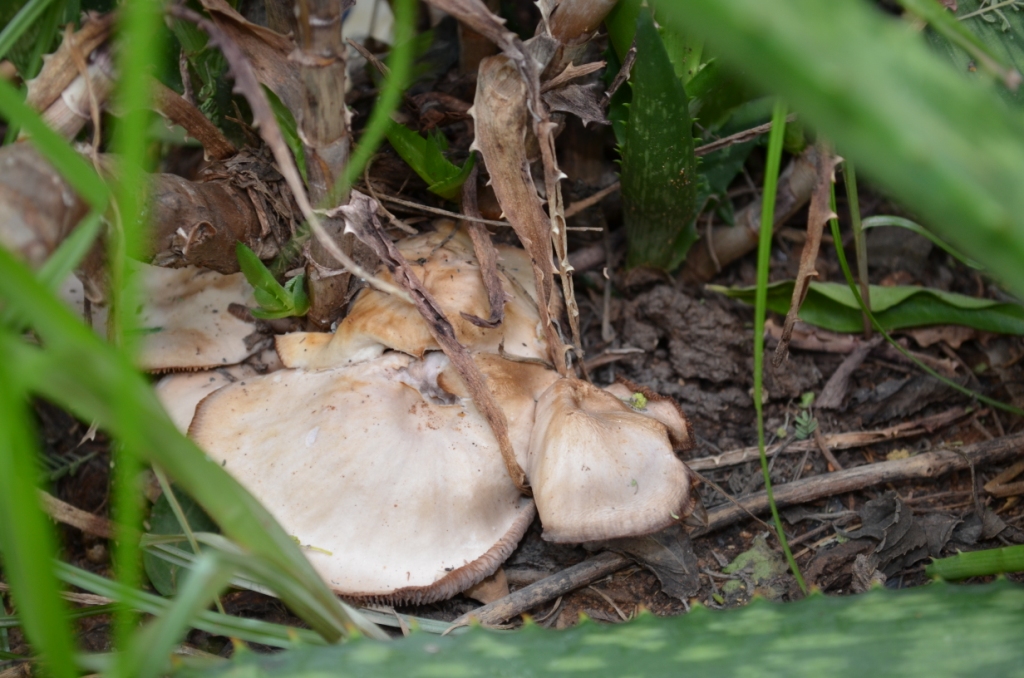
8 Dec – Another 8mm and the Fungi world has awoken
The moss and lichen world too
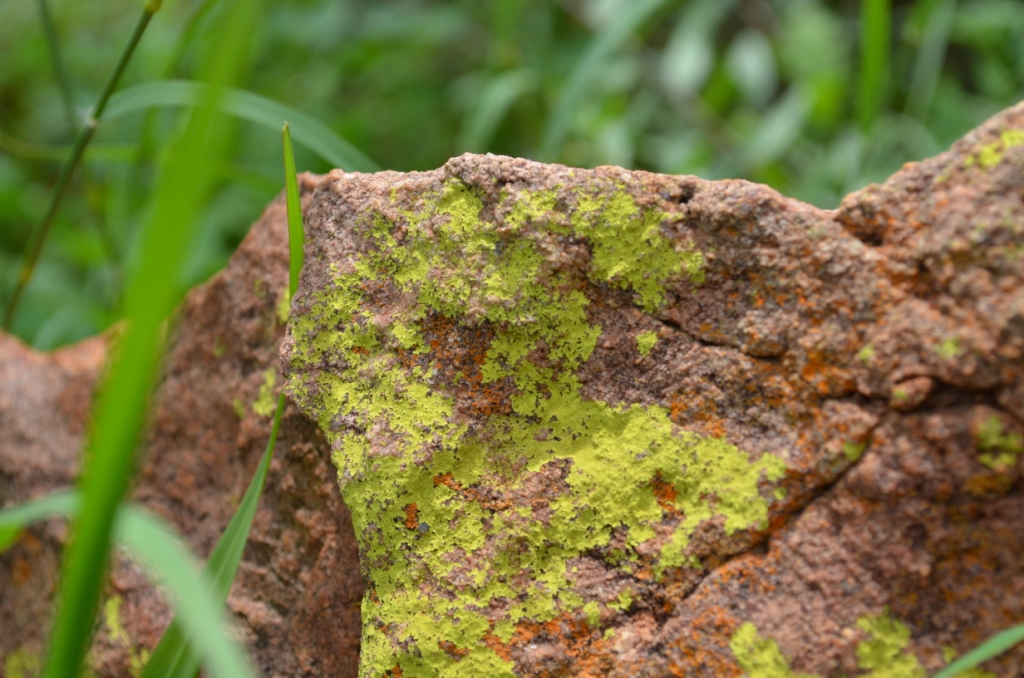
It’s amazing how in this extreme climate everything germinates, grows and sets seed at such a rapid rate. In just over two weeks the devil thorns like Oxygonum sinuatum and Tribulus terrestris are already seeding, and I used to weed out a lot of these plants until I kept some rescued tortoises for a while and found out that they love these plants. They’re also edible and can be used in salads for the former, or cooked like spinach for the latter. Oxygonums have a sorrel-like or ‘donkey-weed’ flavour. Wild basil, Ocimum americanum and the various amaranth species can be used in cooking too.
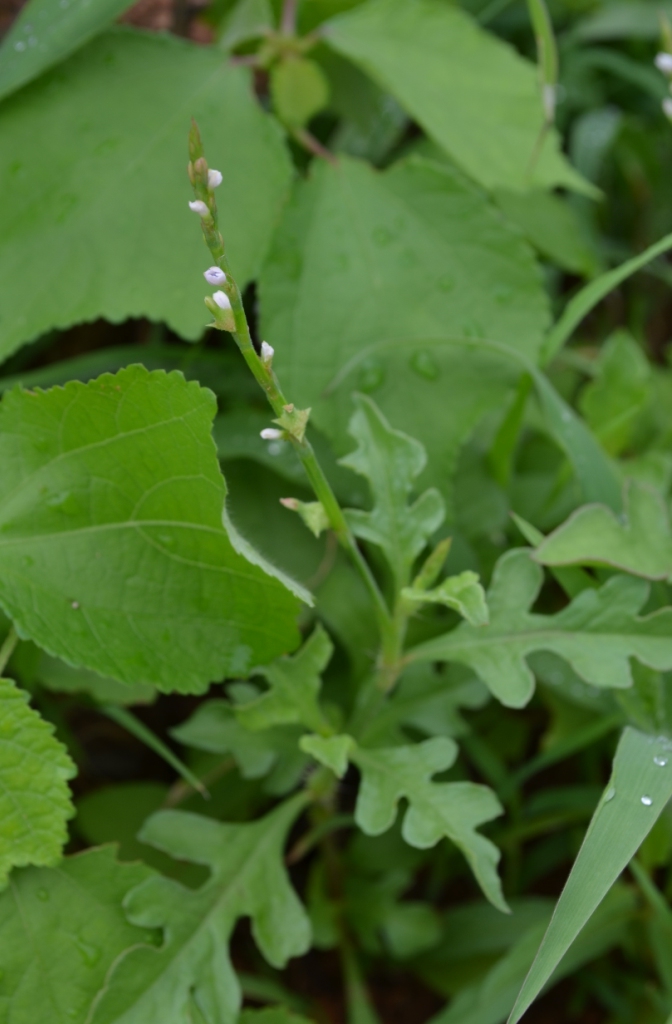
Oxygonum sinuatum 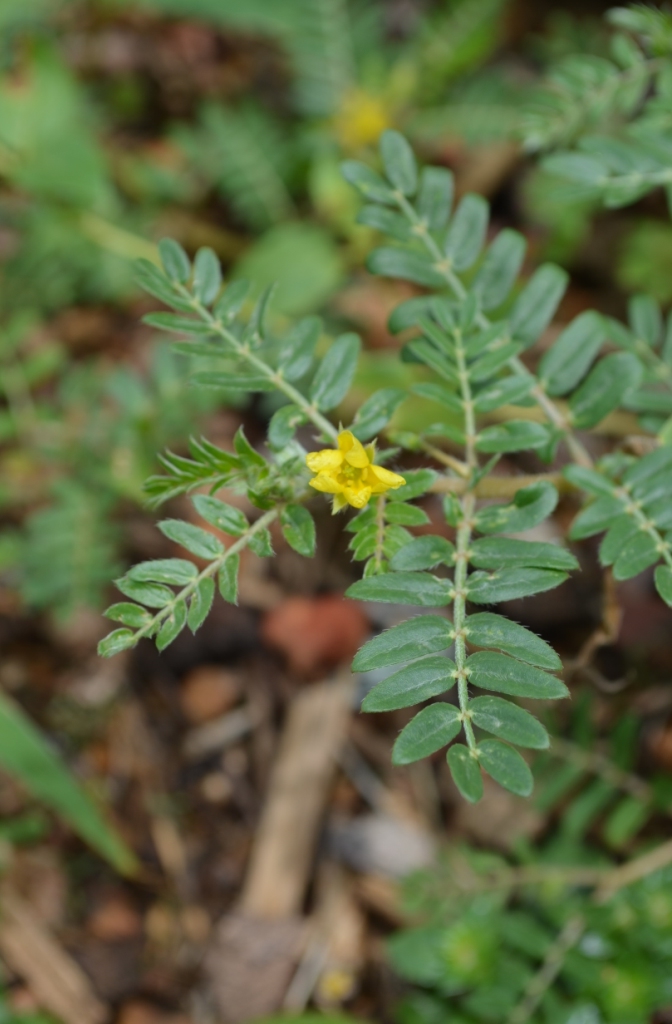
Tribulus terrestris 
Amaranthus spp. 
Ocimum americanum var. americanum
Even more indigenous plants are coming into flower, and as I’m using this a little like a logbook, these are some of the newest plants to flower this week: Sesamum alatum, Kyphocarpa angustifolia, Indigofera holubii or alternans, Sida dregei, Gisekia africana, Ipomoea obscura, Heliotropium strigosum, Crotalaria sphaerocarpa, Commelina africana, Justicia flava, Spermacoce senensis, Vahlia capensis, Chamaecrista absus, Mollugo cerviana, Blepharis and Gomphocarpus fruticosus, plus an unidentified so far, and here comes the deluge of photos.
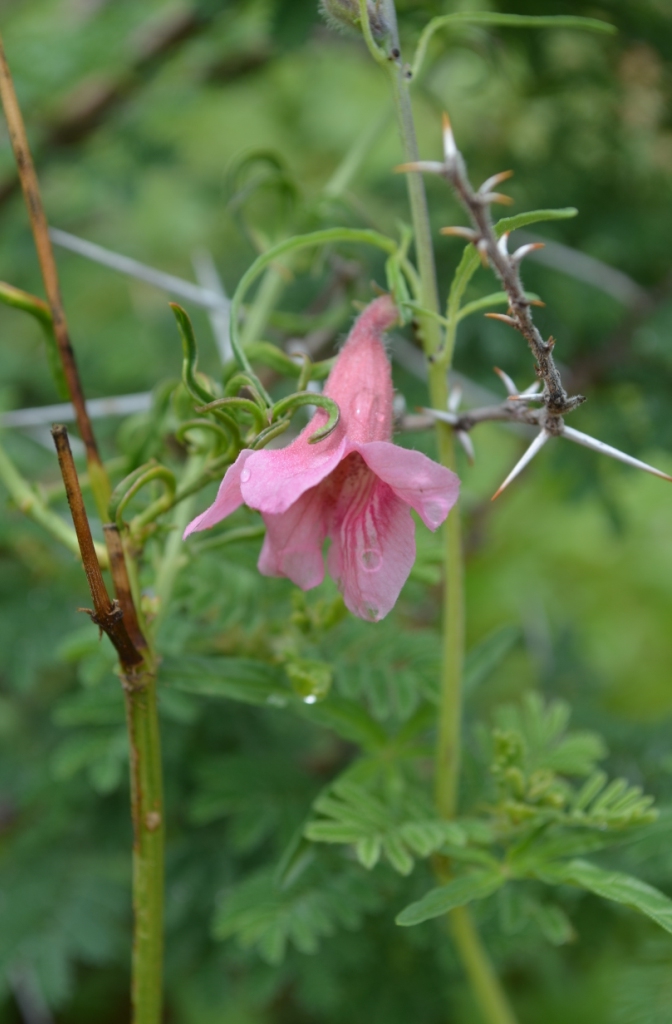
Sesamum alatum 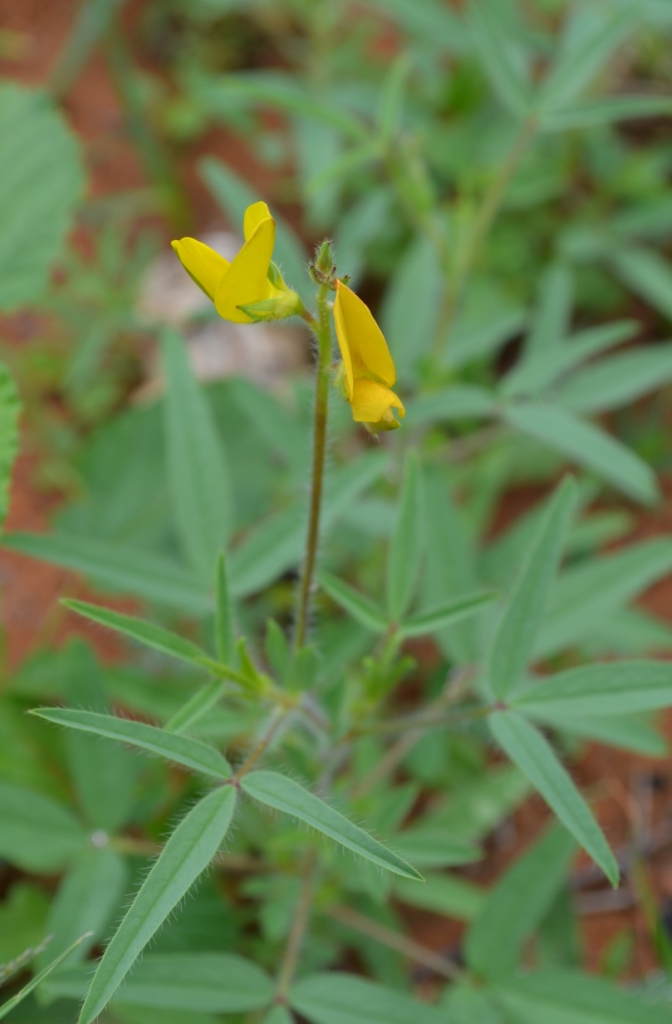
Crotalaria sphaerocarpa 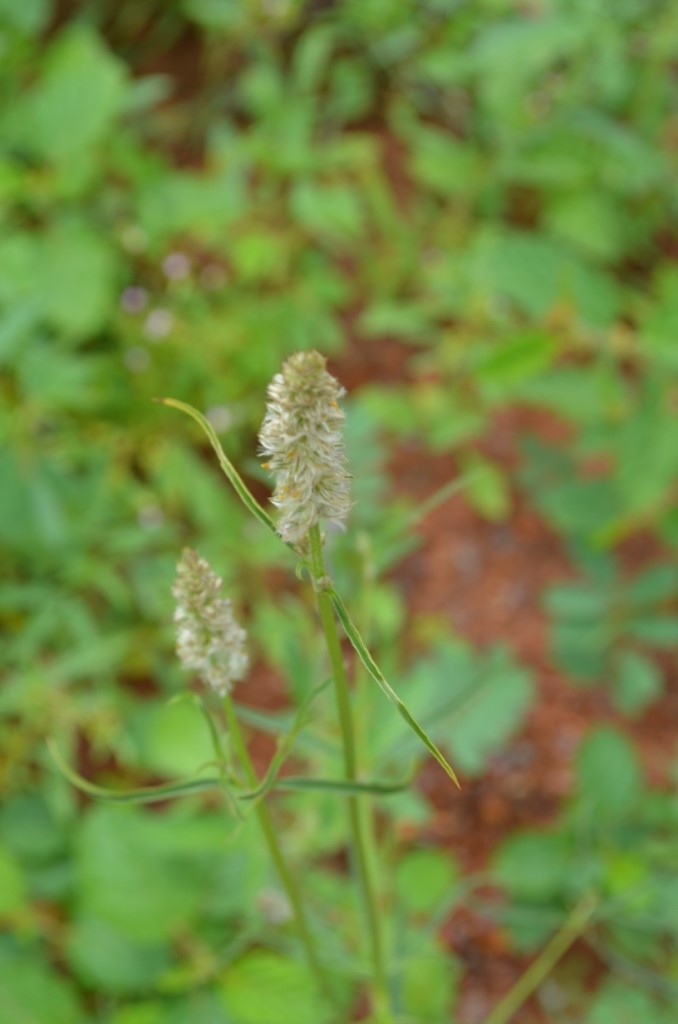
Kyphocarpa angustifolia

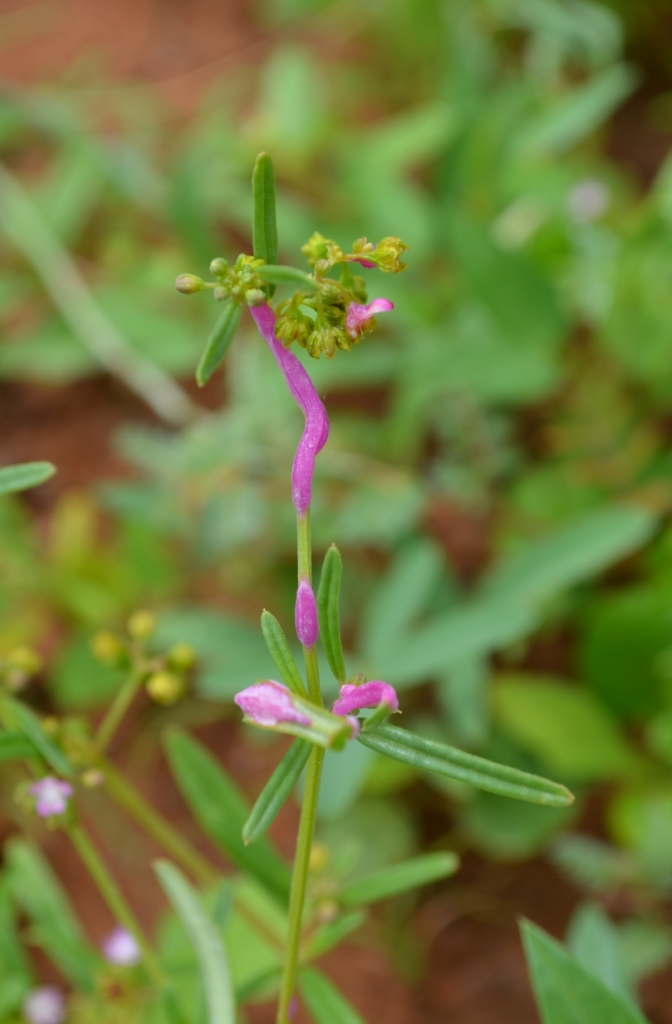
Gisekia’s colourful foliage 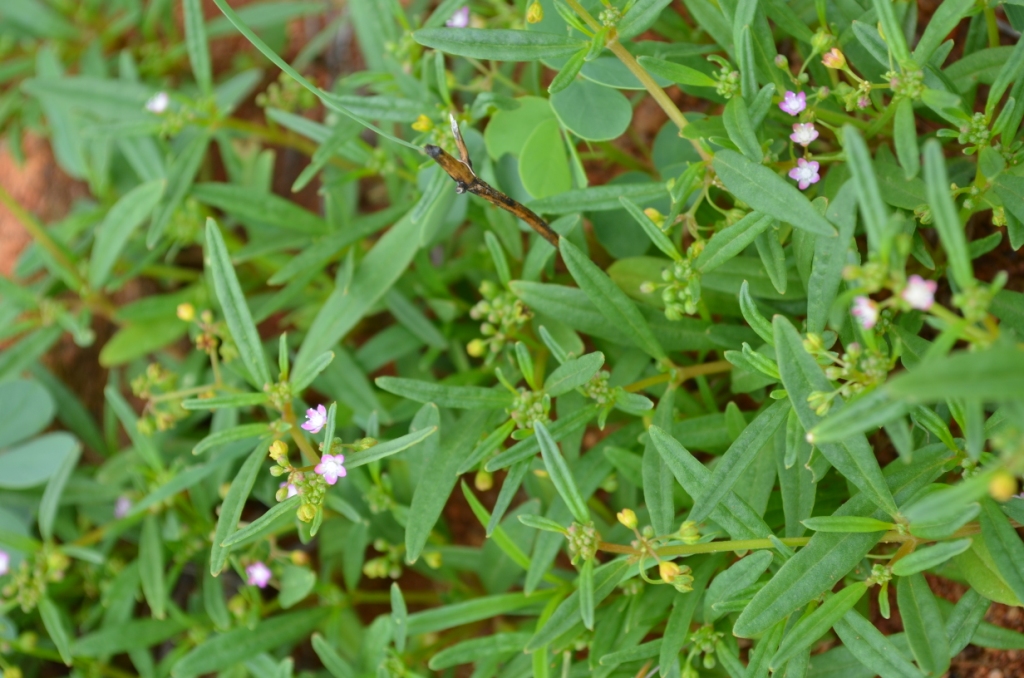
Gisekia africana 
Heliotropium strigosum 
Ipomoea obscura 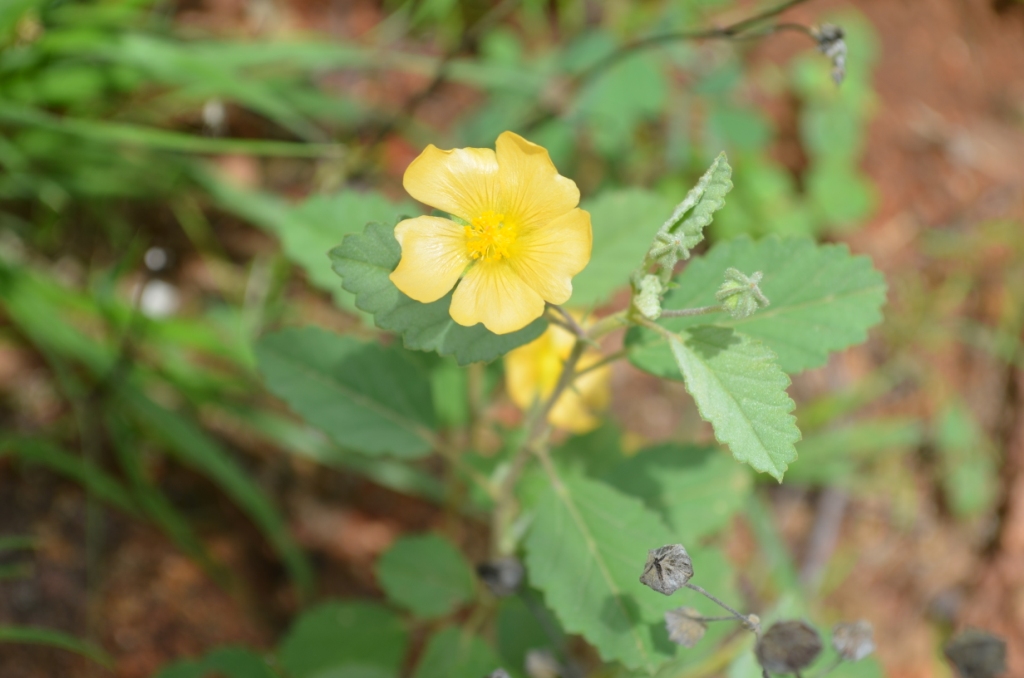
Sida dregei 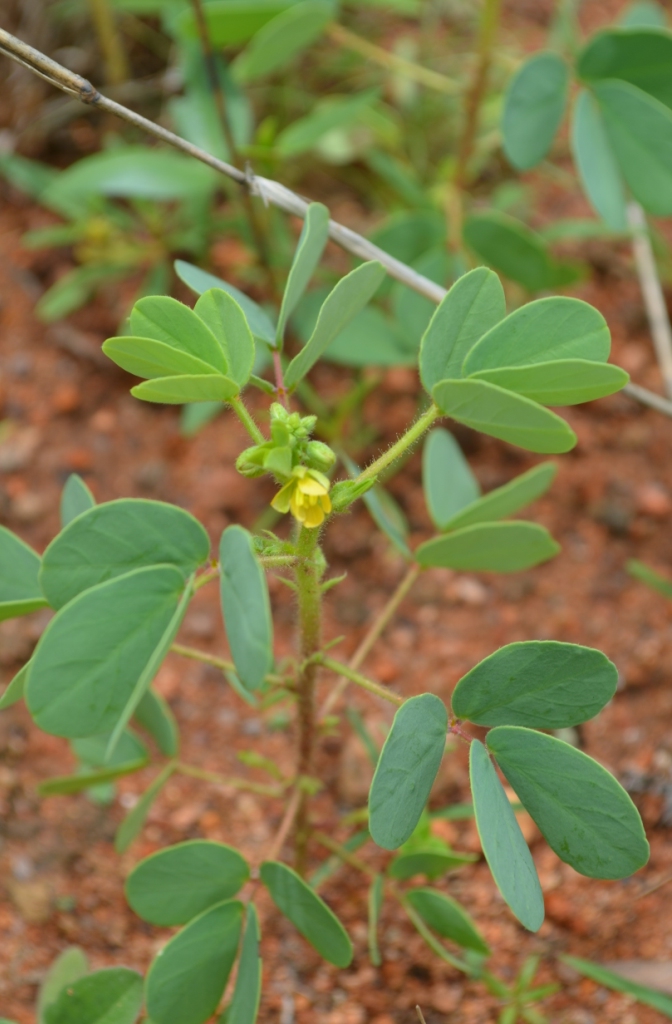
Chamaecrista’s unusual yellow flowers (usually orange) 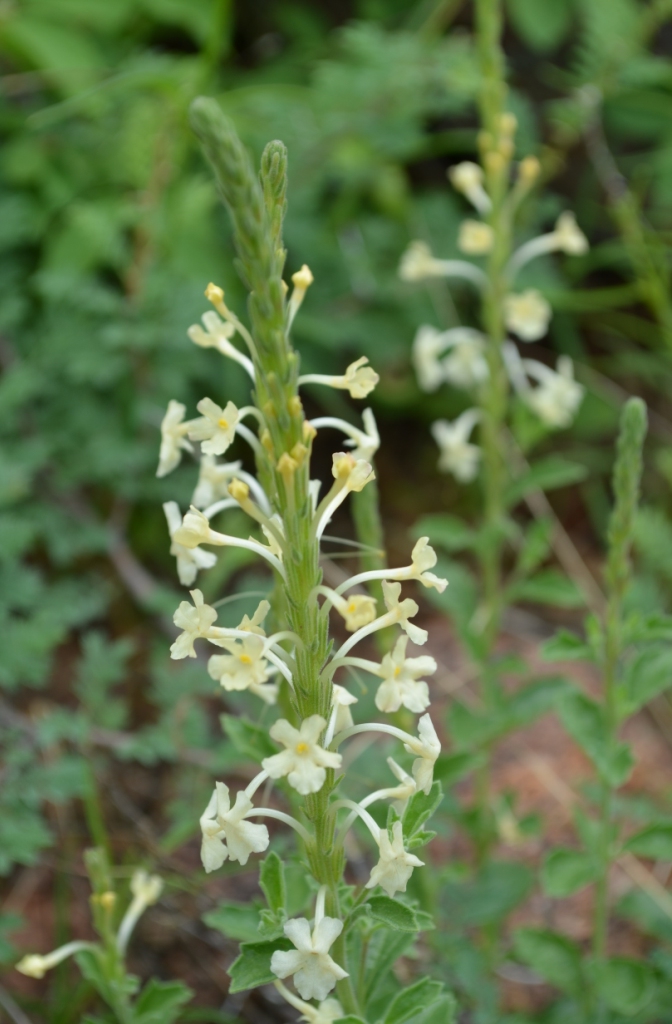
Chascanum hederaceum
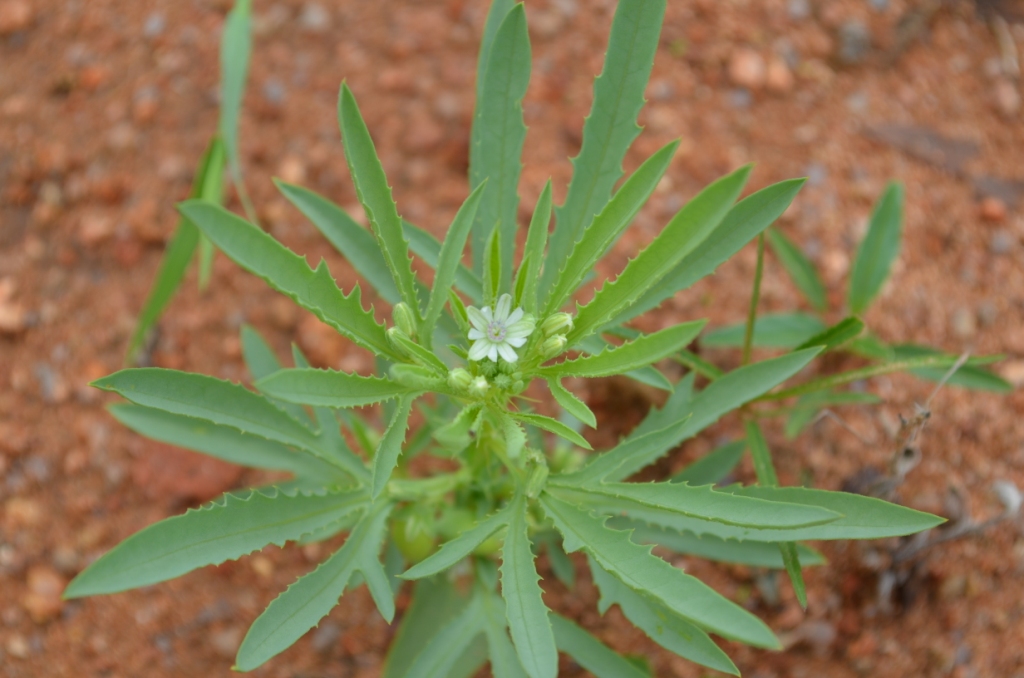
Unknown for now 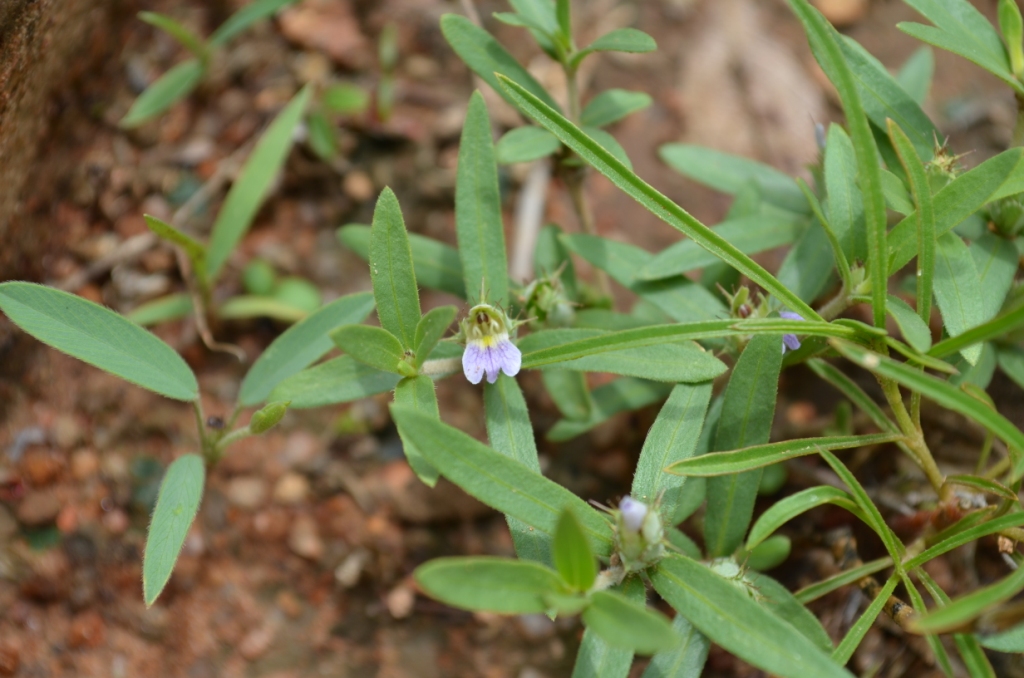
Blepharis spp. 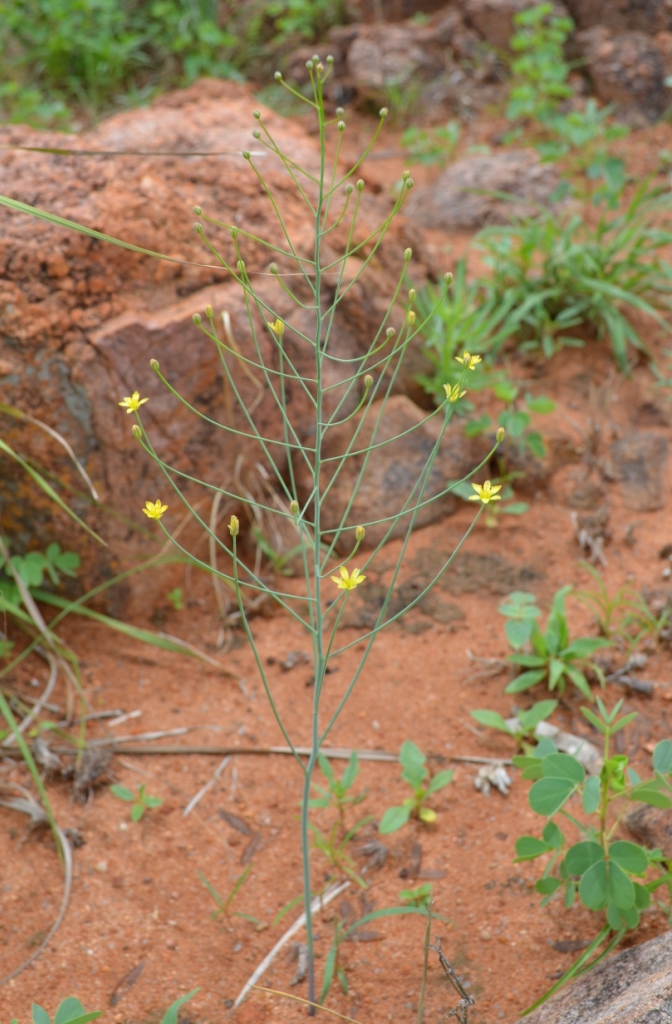
Eriospermum flagelliforme 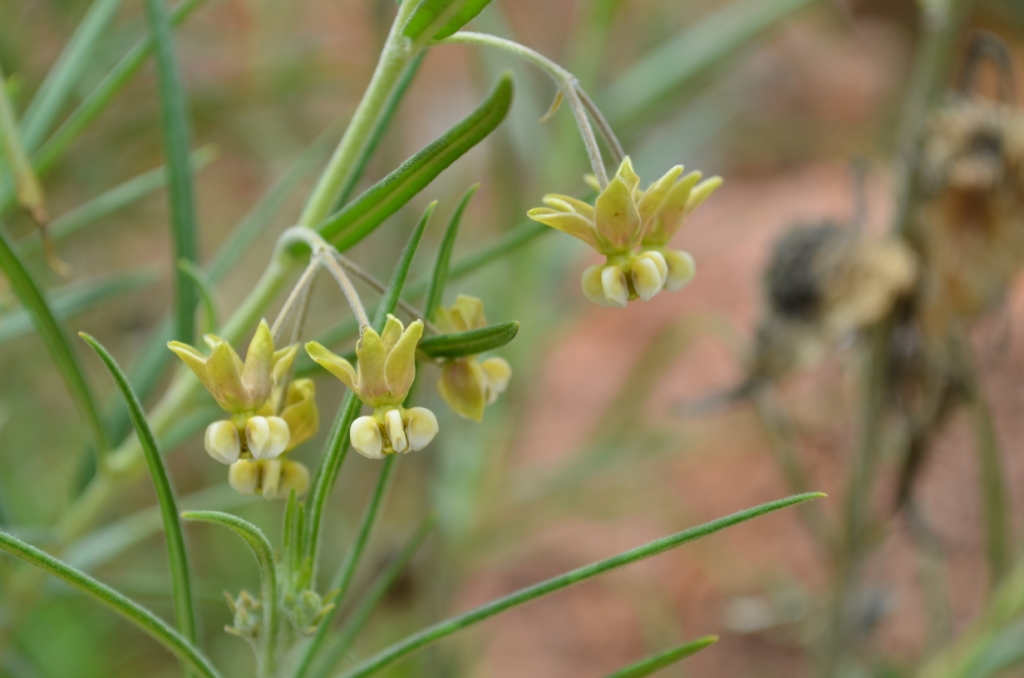
Milkweed, Gomphocarpus fruticosus
New grasses have also started flowering, and lots of insects like millipedes and red mites come out just after the rains
1-7 Dec We received 12mm, 8mm, 14mm and 22mm today, but its still raining, so will have a look a bit later.
In the vegetable garden: After the last rains in November to the beginning of December, the days were really hot and while the garden became a jungle in the space of two weeks some plants didn’t take too kindly to the blazing temperatures. The corn dried up, but I’m leaving it on in case some kernels have developed. The tomatoes became riddled with mealybug, but still producing thankfully. The chilis thought it was heaven, and so did the sorrel, sugar beet, chard, tomatillos and jerusalem artichokes. The sunflower in the garden has finished and set seed, but the one in the pot is only just about to flower. The potatoes are now about 20cm and so I’m going to mound them up.

In the herb garden: The nasturtiums died back in the last week, but are still putting a few new bonsai’d leaves. The mint, and gotu kola died back a bit, but still doing quite well. The rosemary, sage, oregano, parsley and lavender seem to have established themselves now, and they resisted the heat wave with ease. So too did the roses, catnip, ashwagandha and feverfew.

In the fruit garden: The goji and gooseberries are doing well. I planted out one of my custard apples just in time for this lovely rain. I haven’t found the right place yet for the avocadoes, mangoes, or grapes, so have found a couple of new spots, and going to try them out and see. The granadillas are loving this weather and spreading out over everything as always… if only I had a long road for an endless pergola of granadillas. The huckleberries have finally started to ripen, but they have a mass of mealybugs and bagrada bugs on them, so will see if they shake these pests off with the rain.

In the garden: The elder and arabian jasmine are competing for sky space by the herb garden entrance, and lovely white flowers canopy the whole area. The star jasmine has really done well this year and continues to flower. The potato bush has not stopped flowering and is just a mass of purple, it has interwoven through the grewia, so the yellow and purple flowers are giving the garden a real cheery look. The tropical garden survived the heat, but the curry bush got some sort of bug that laid its eggs in the growing tips (which I pinched off). The gauras didn’t like that heat, but have been watering so will see if they manage to come through. The leaves of the hypericum bush browned and curled a bit, although fresh green shoots below show that it will probably come about with this rain.
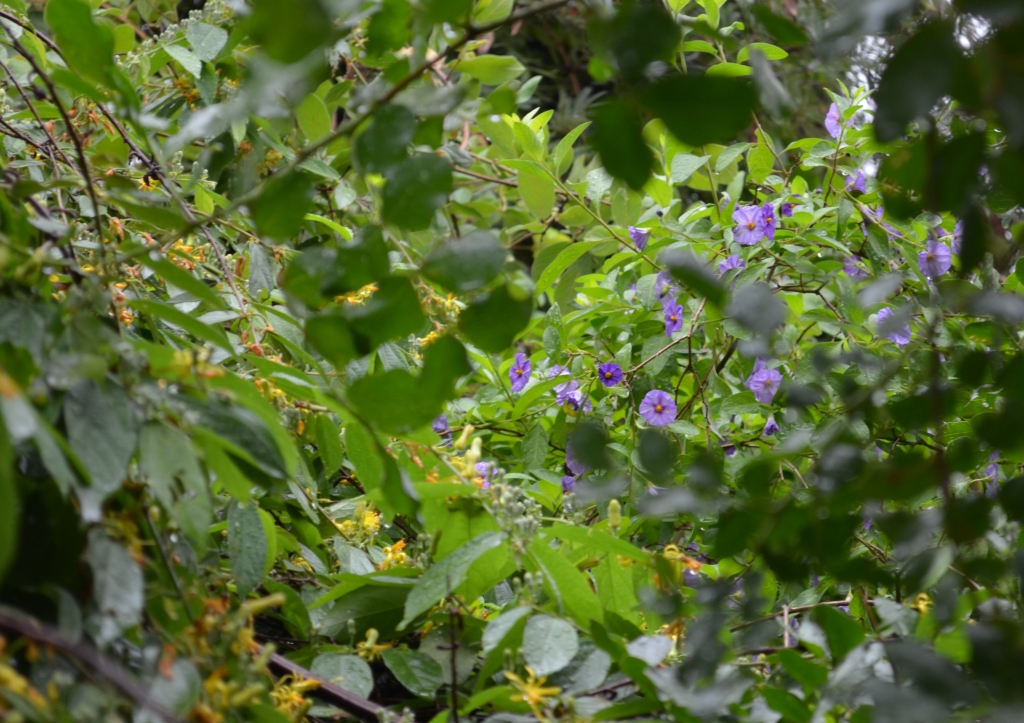
In the indigenous garden: More alive than ever and always providing hidden surprises, its now the turn of the Crotalarias and Commelinas to come into flower. The Eriospermum flagelliforme and Trachyandras are flowering too, with their dainty yellow flowers and white flowers. Heliotropiums, Lantana rugosa, Hermannia modesta and Chascanums too, and the Hermbstaedtias are just starting. The gorgeous Ipomoeas are also beginning to germinate and I. bolusiana is flowering all over.

Hermannia modesta 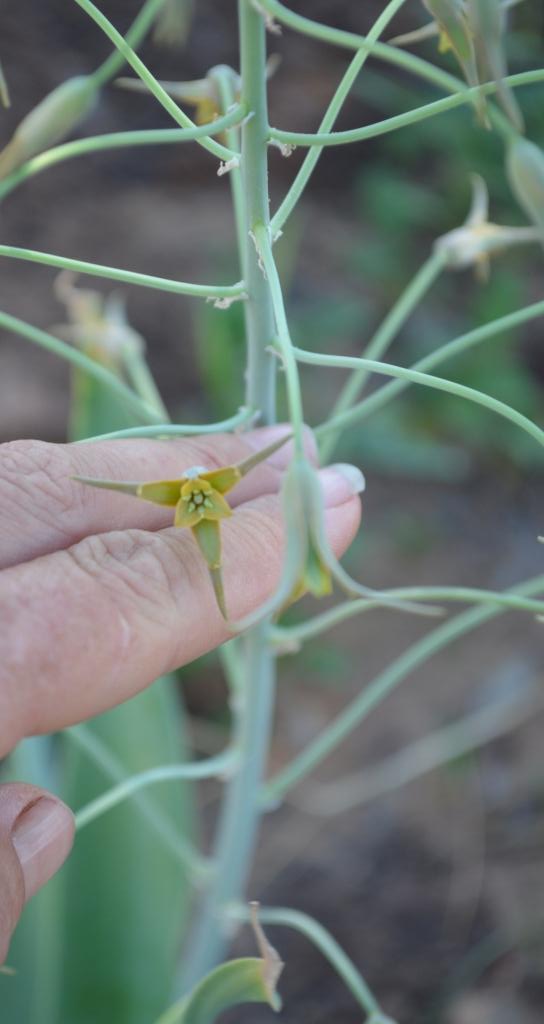
Dipcadi viride 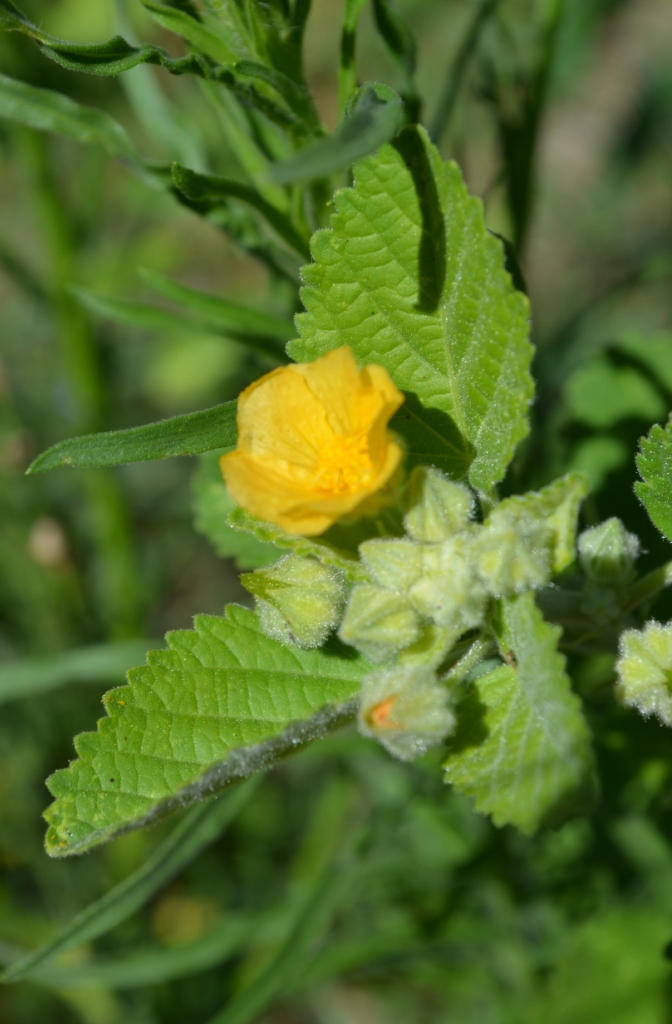
Sida cordifolia 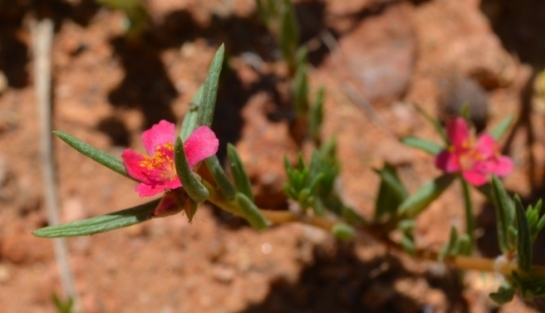
Portulaca kermisina 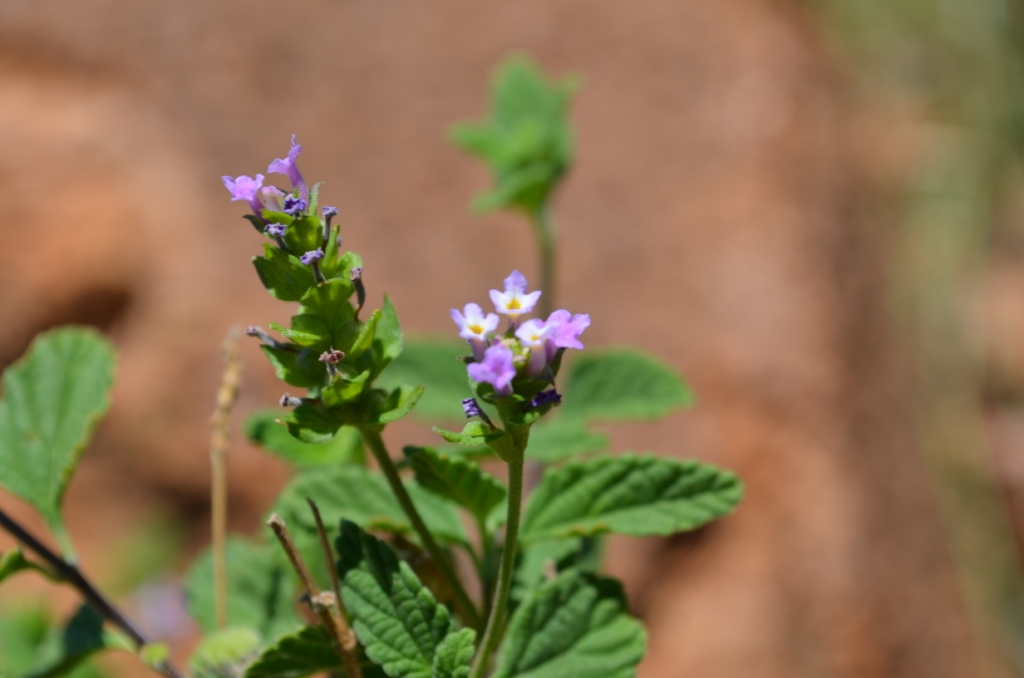
Lantana rugosa
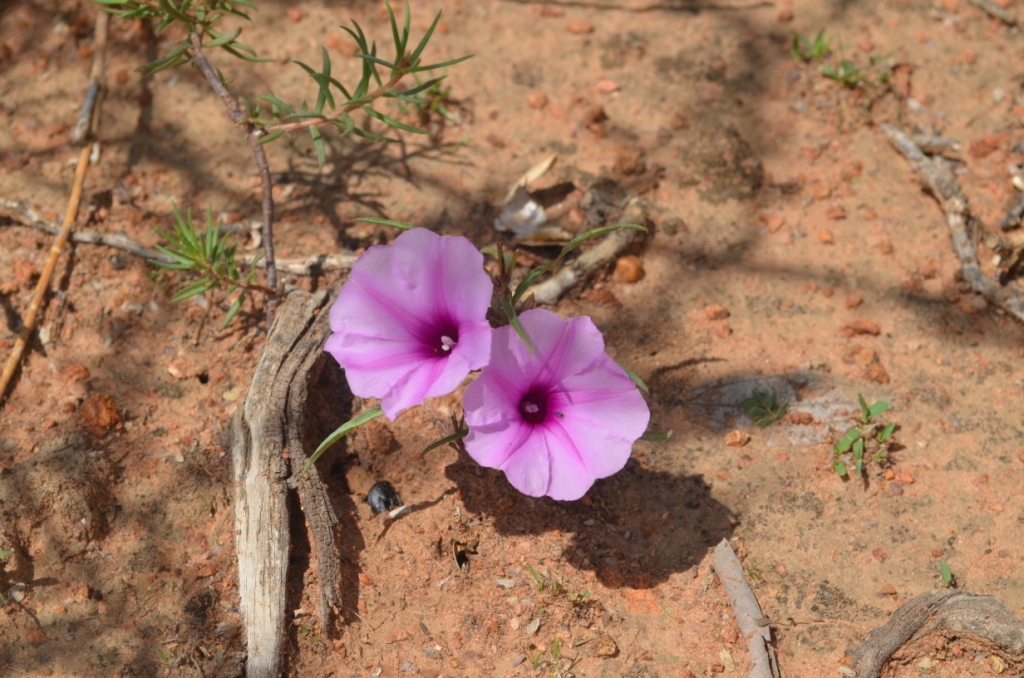
Ipomoea bolusiana
